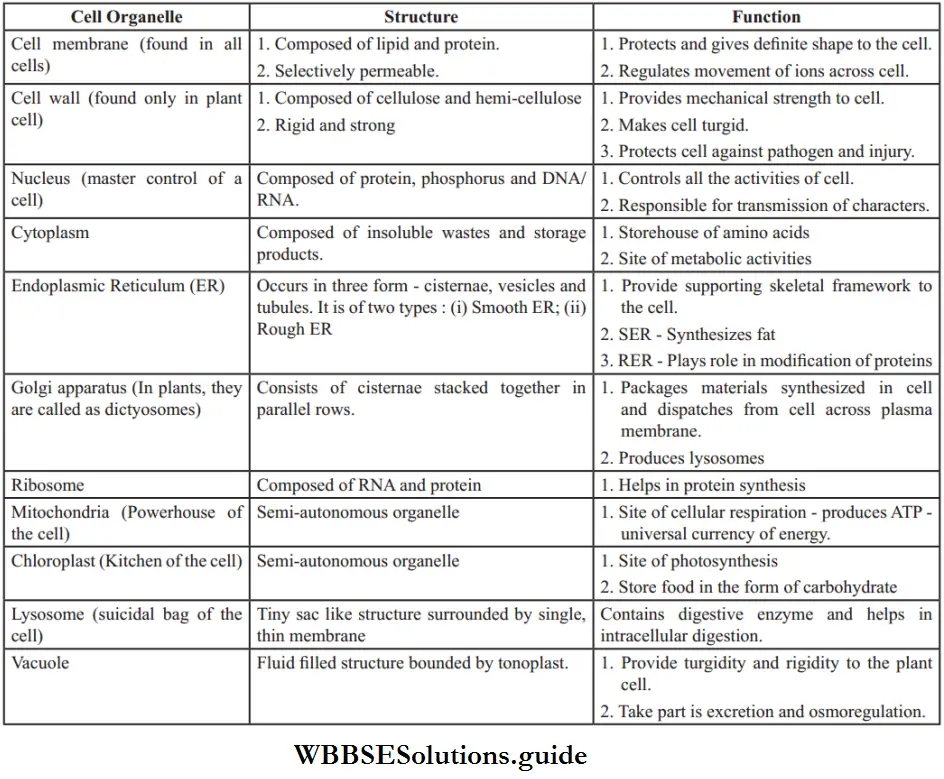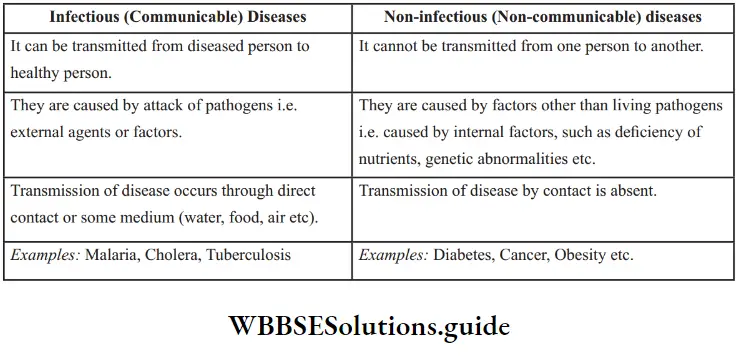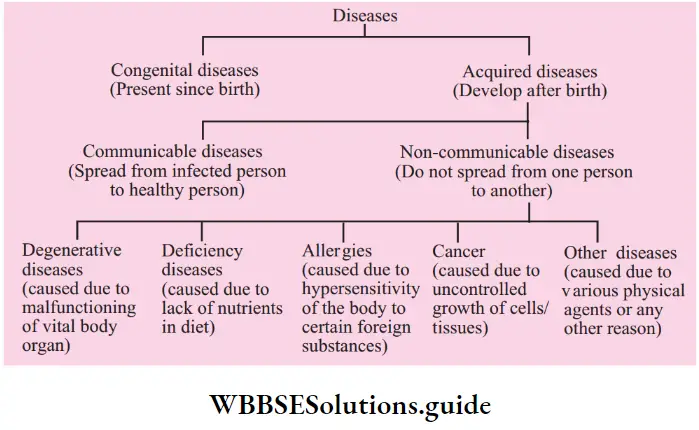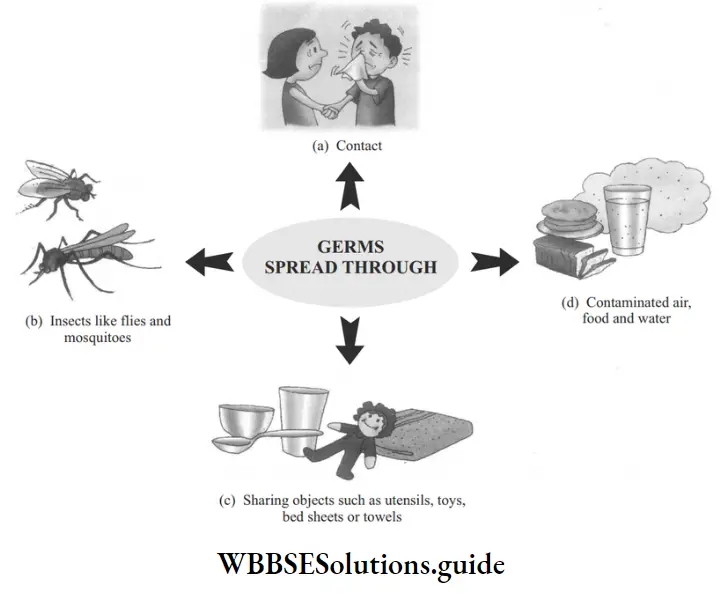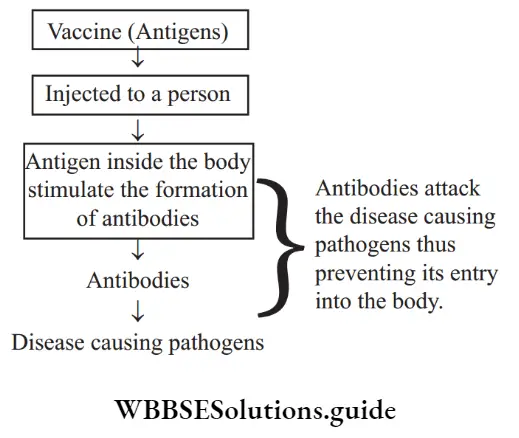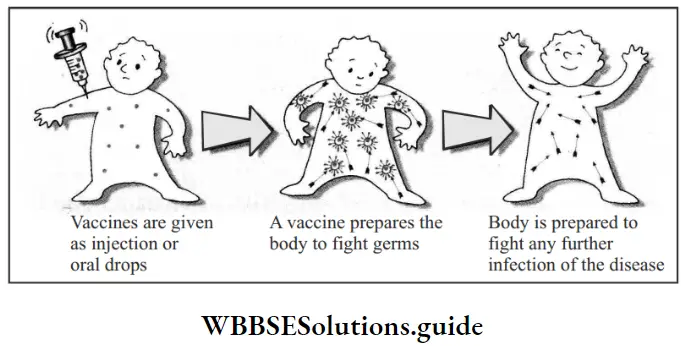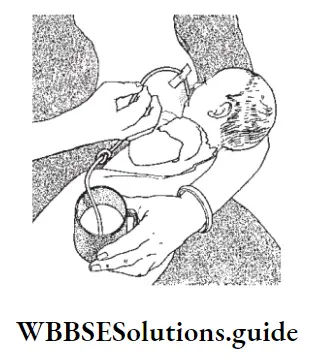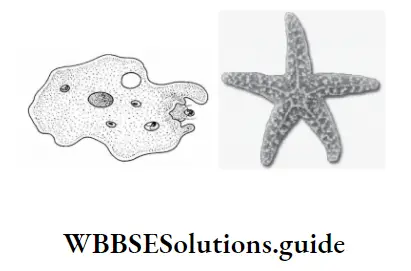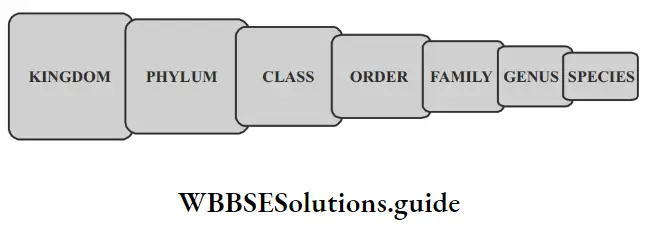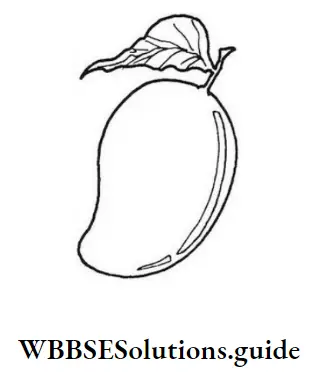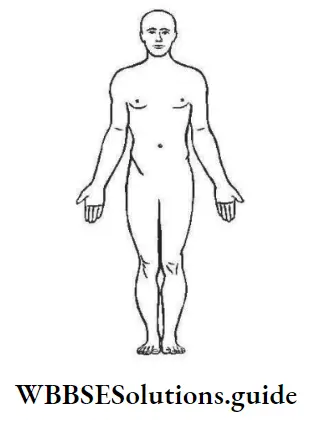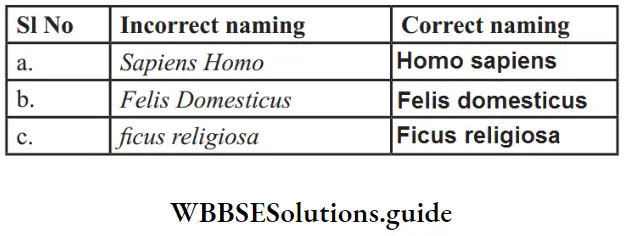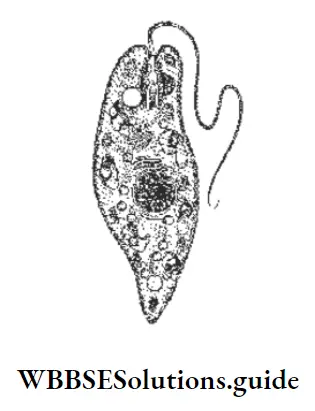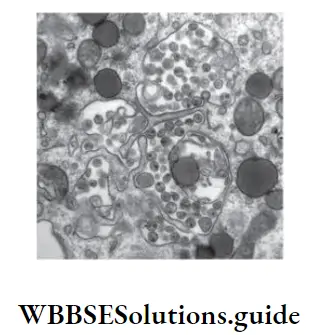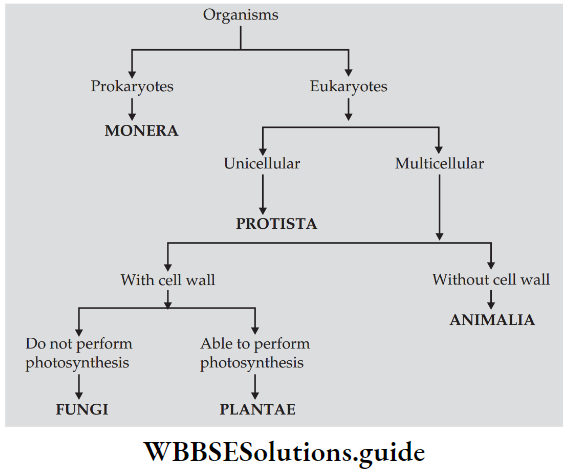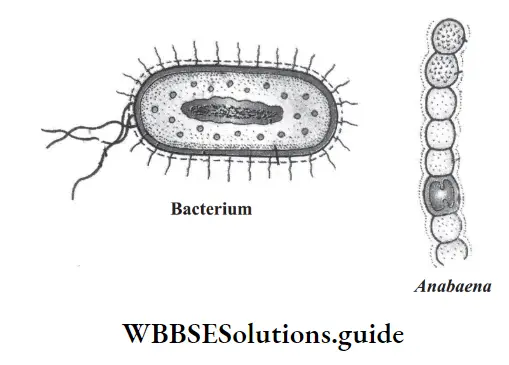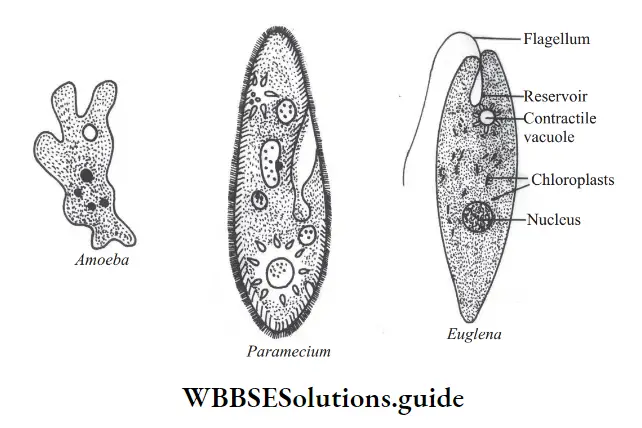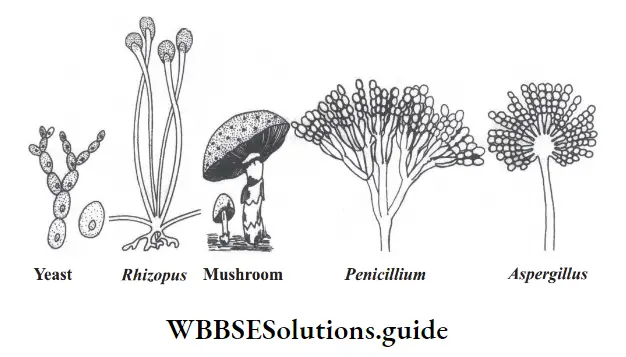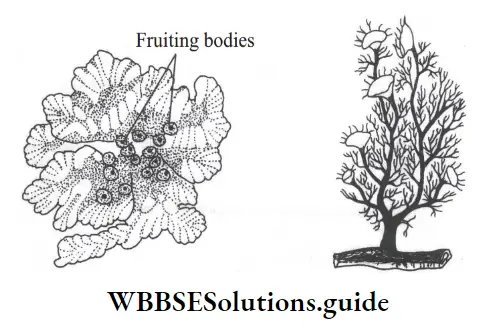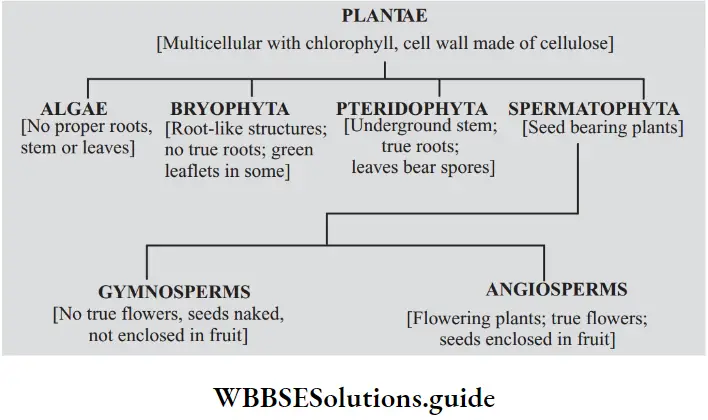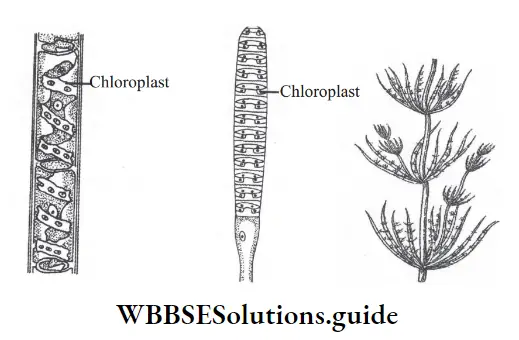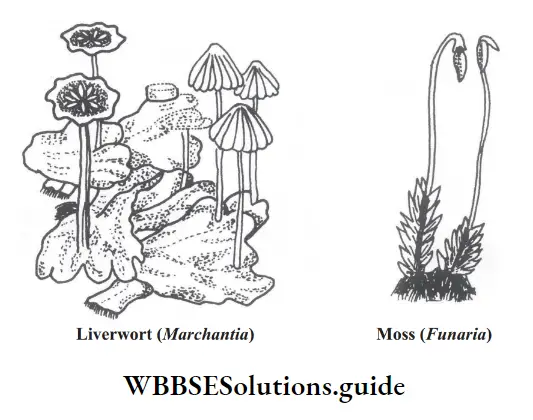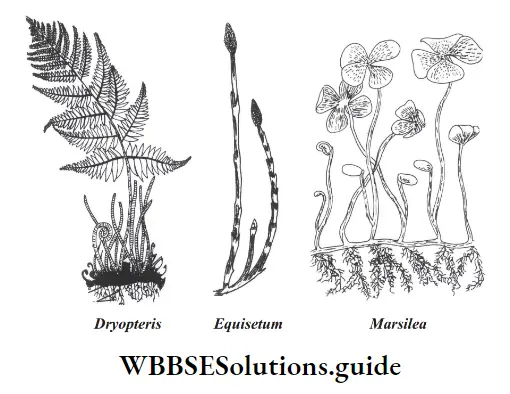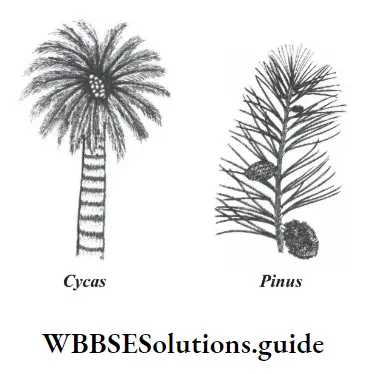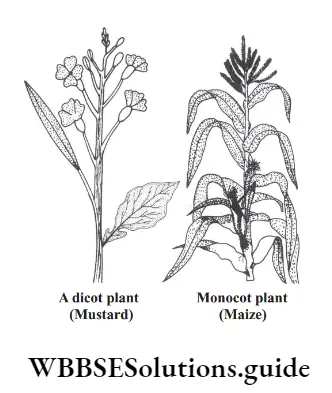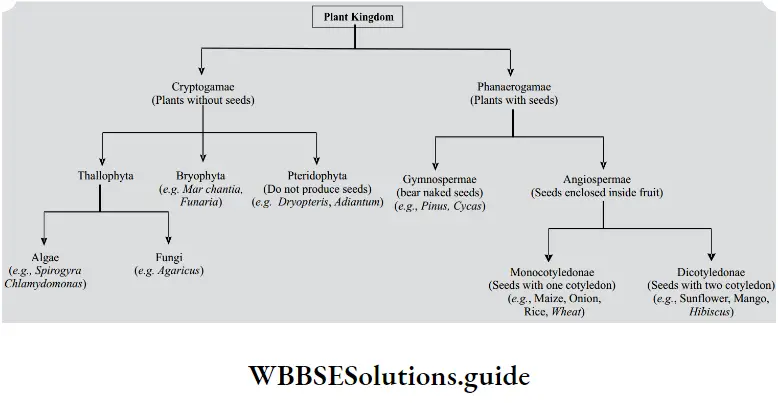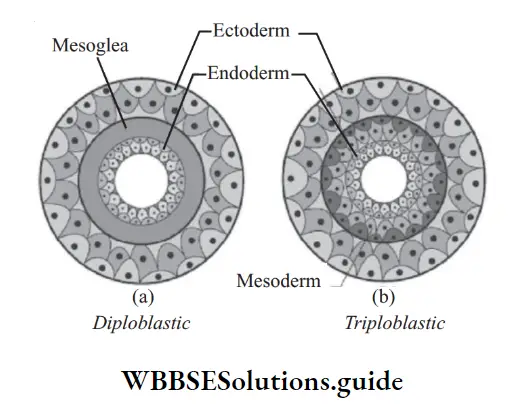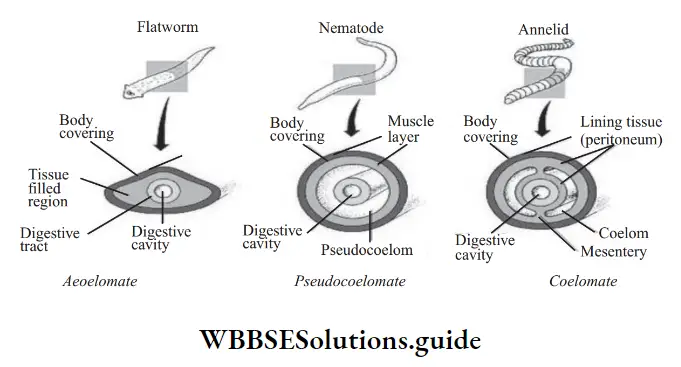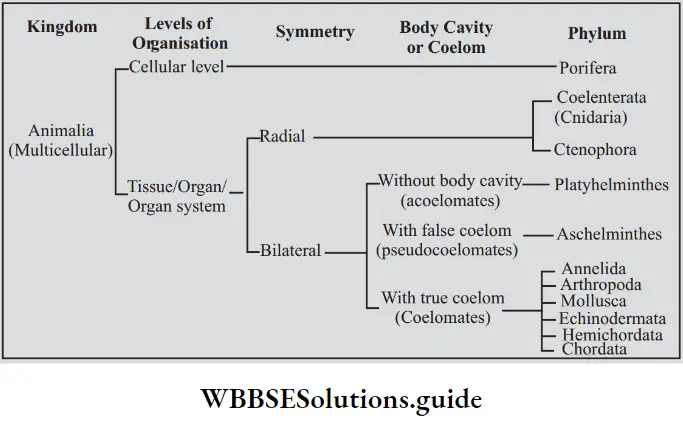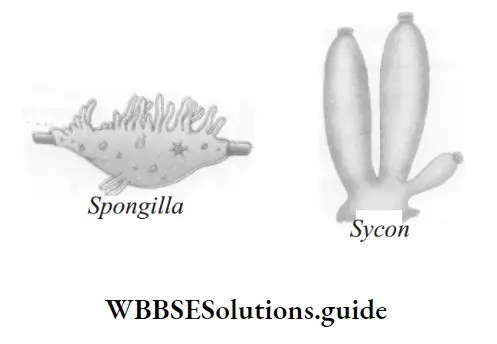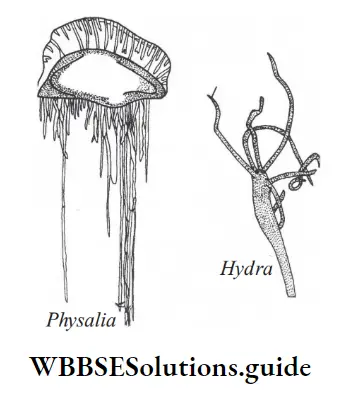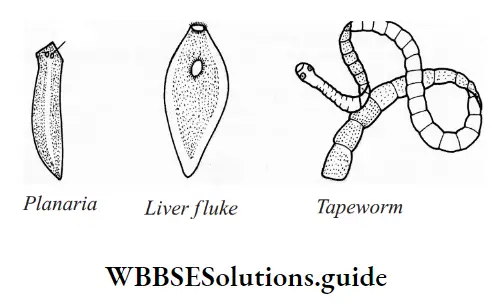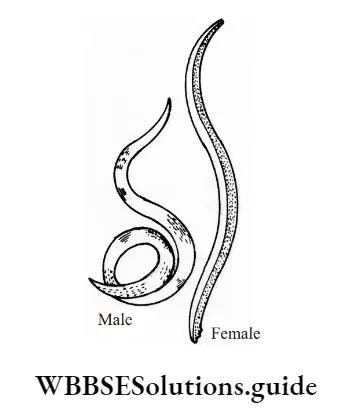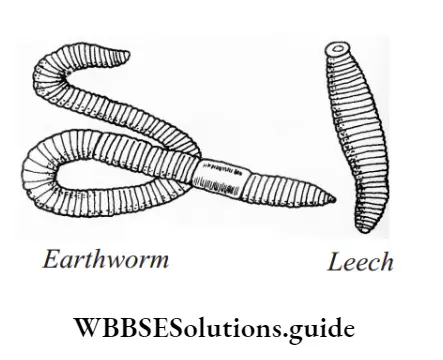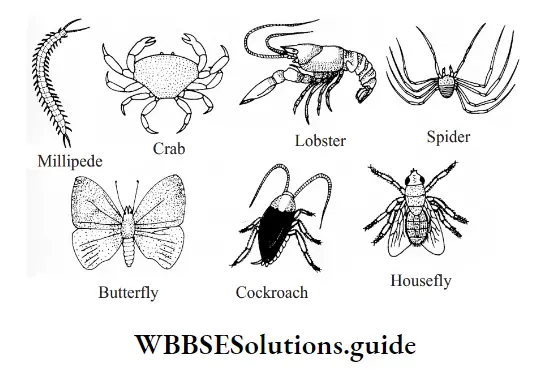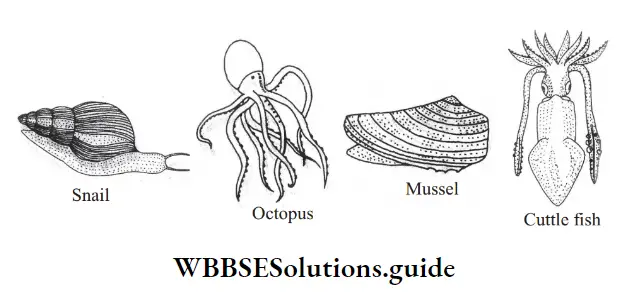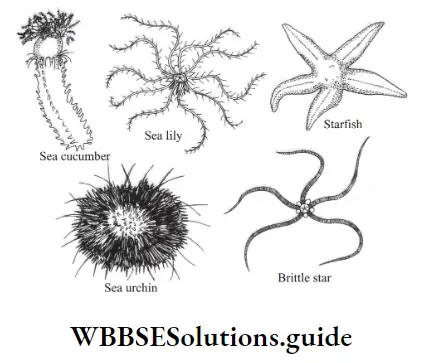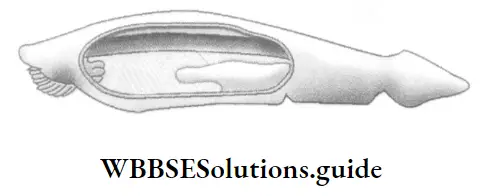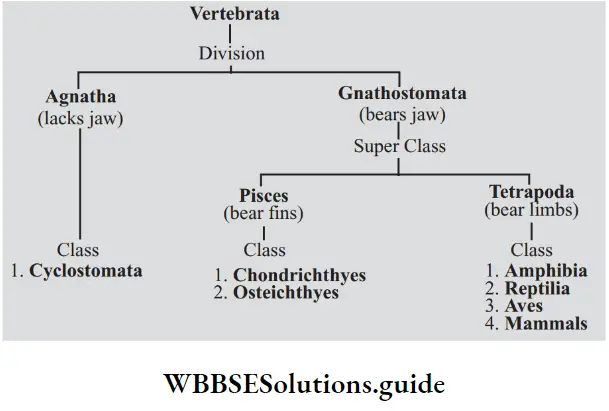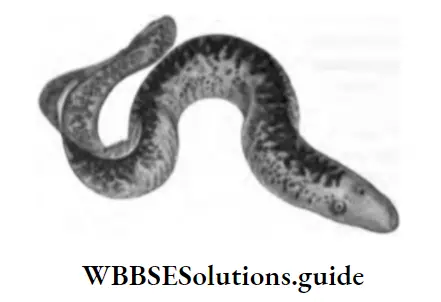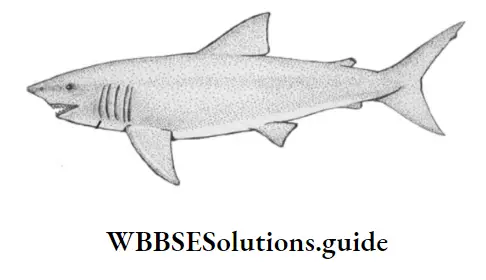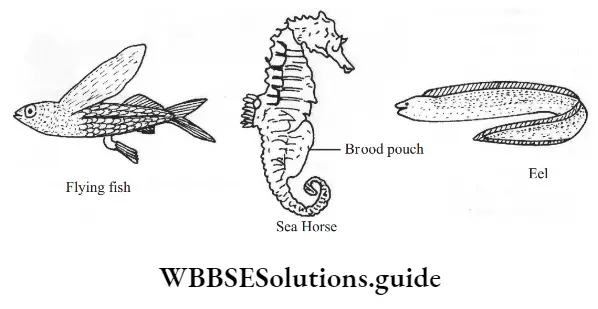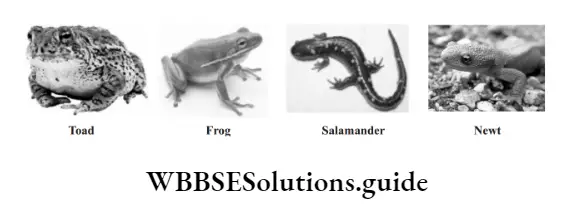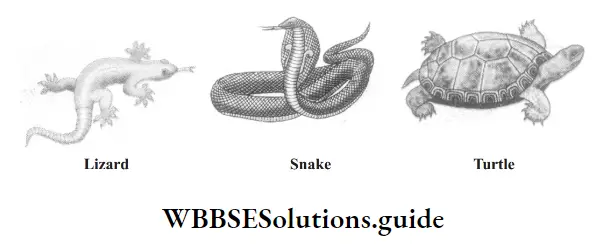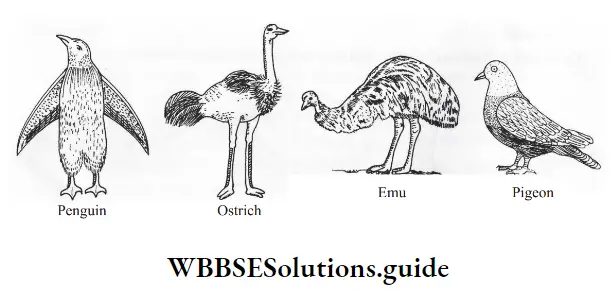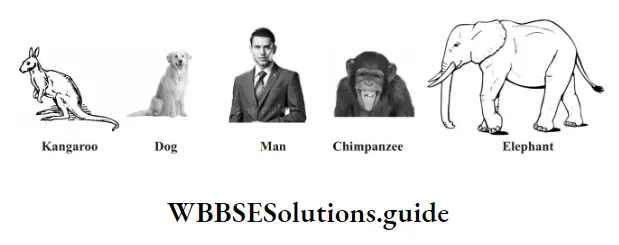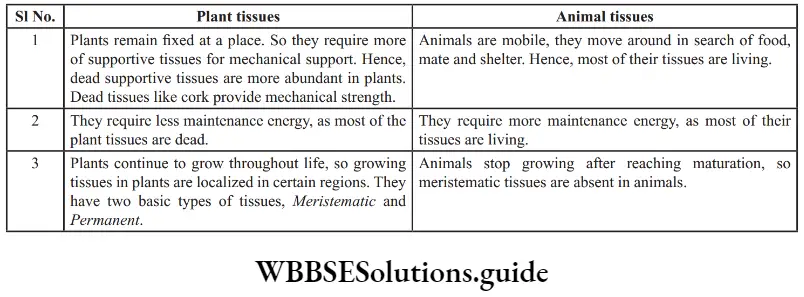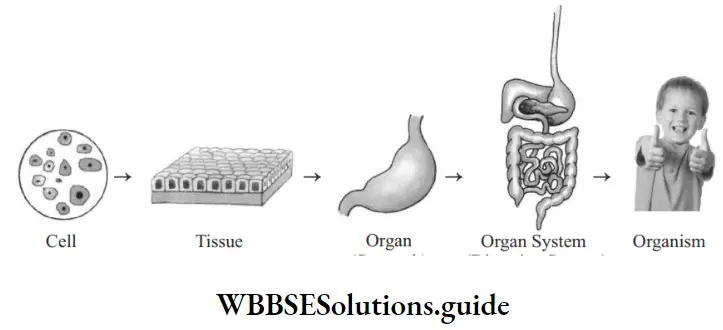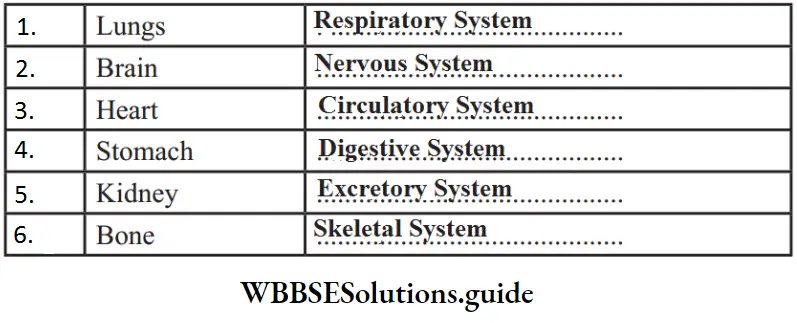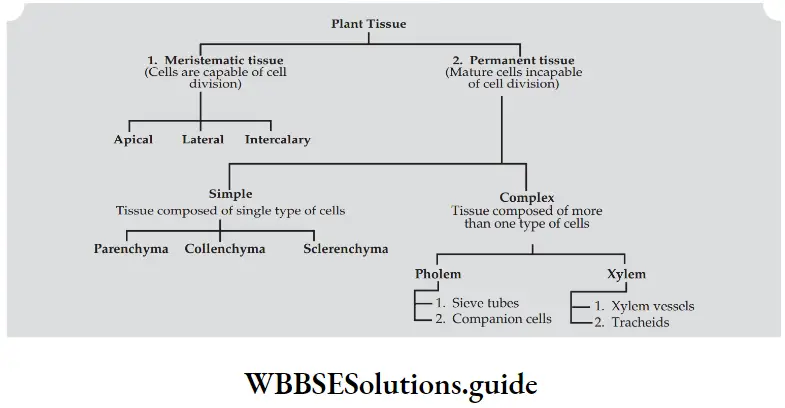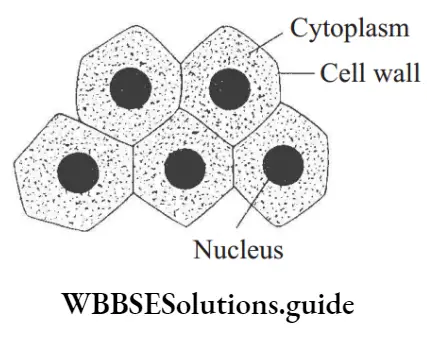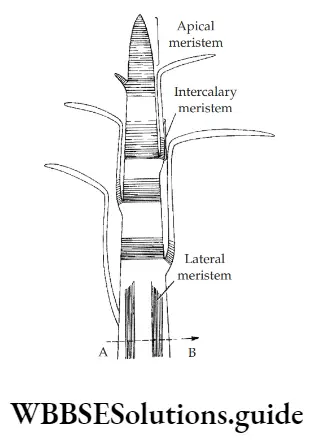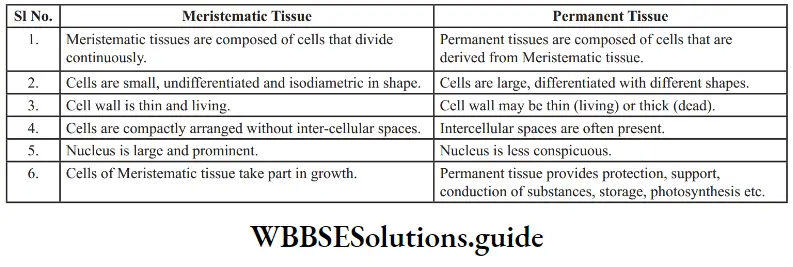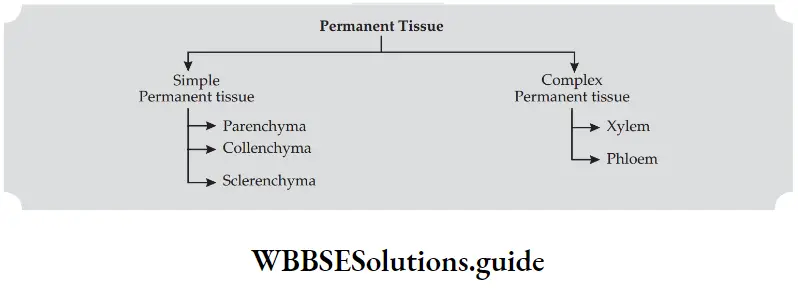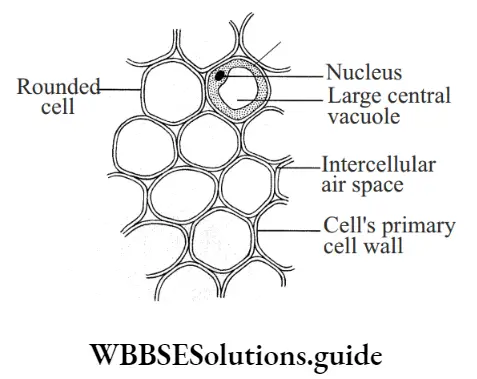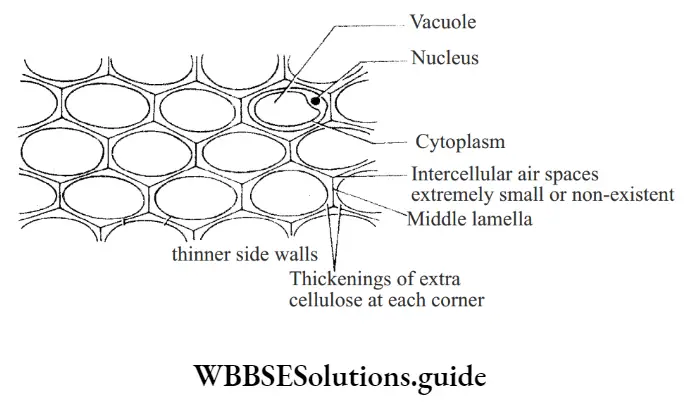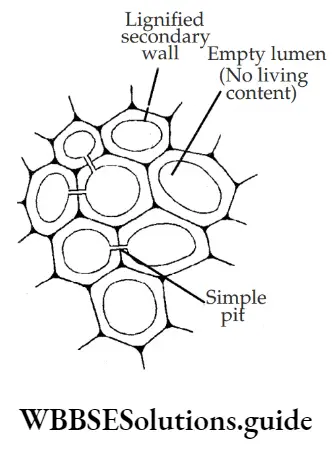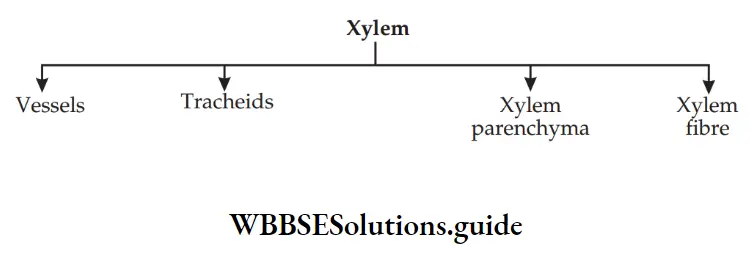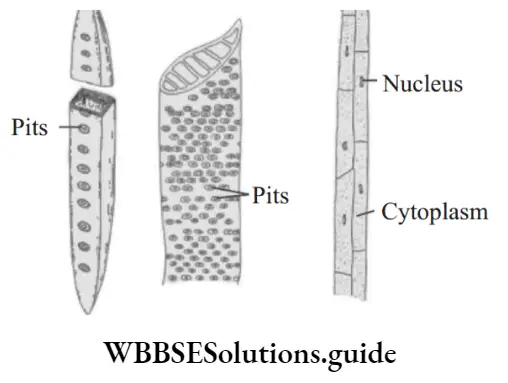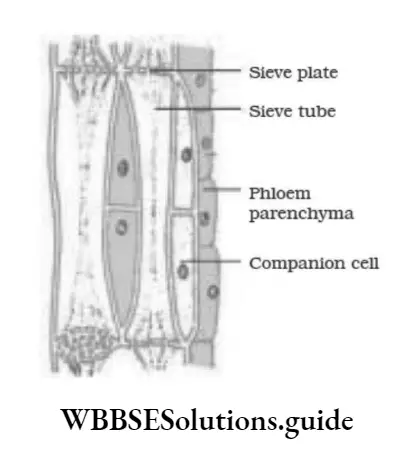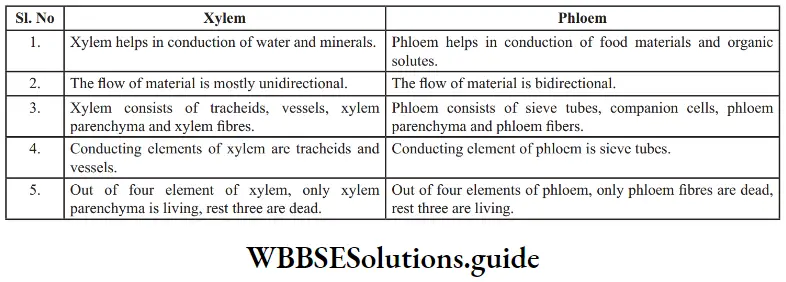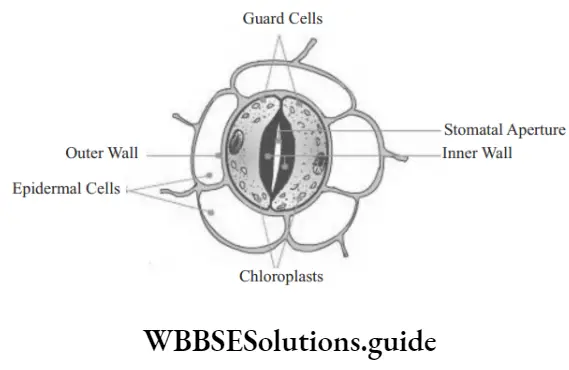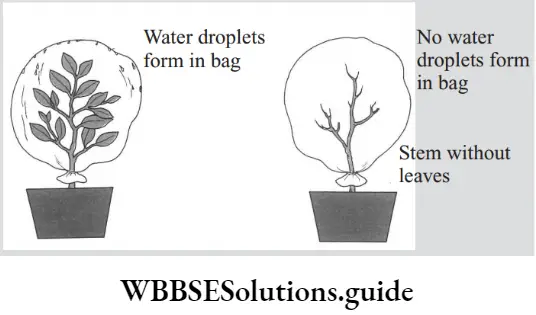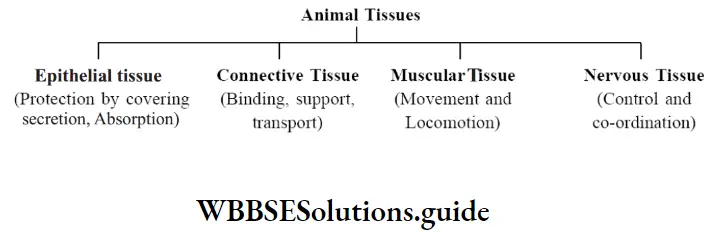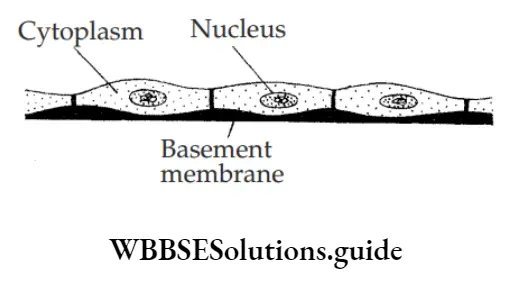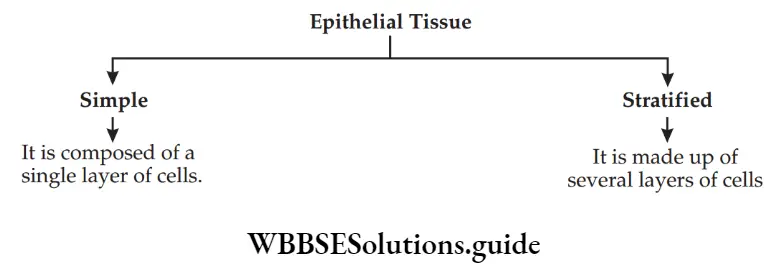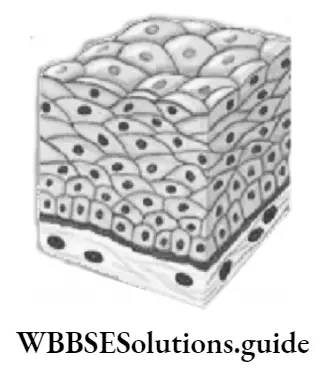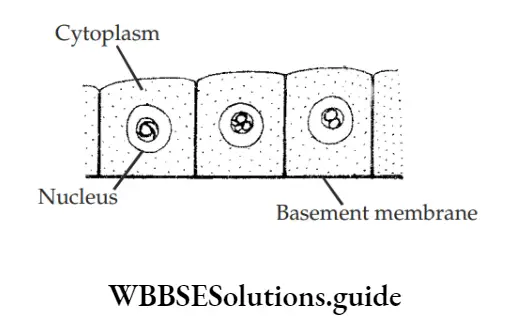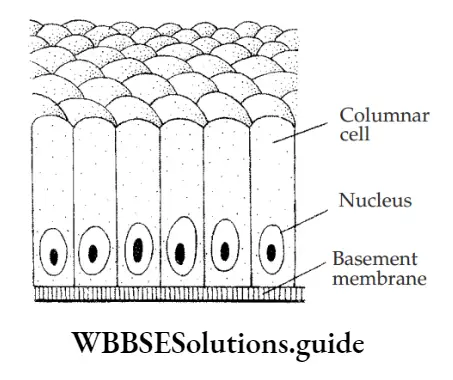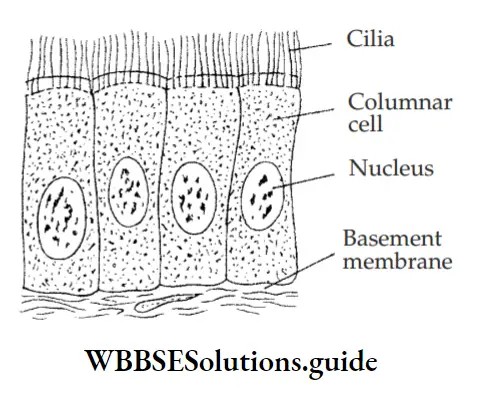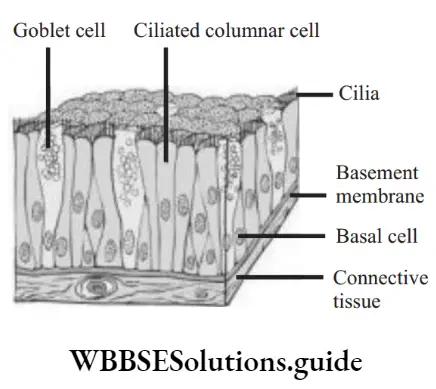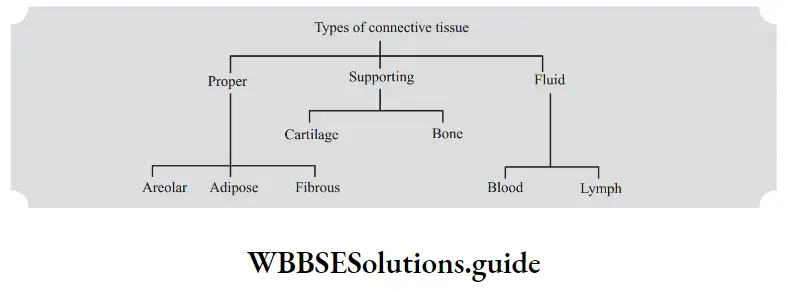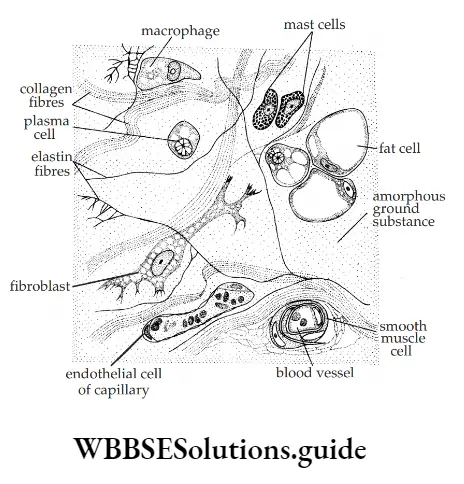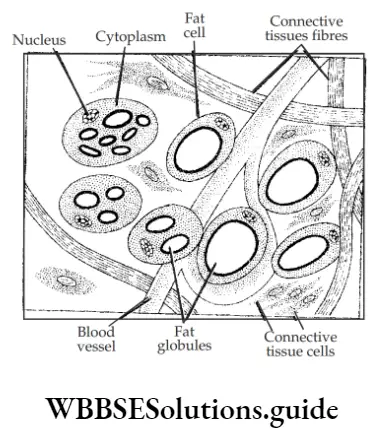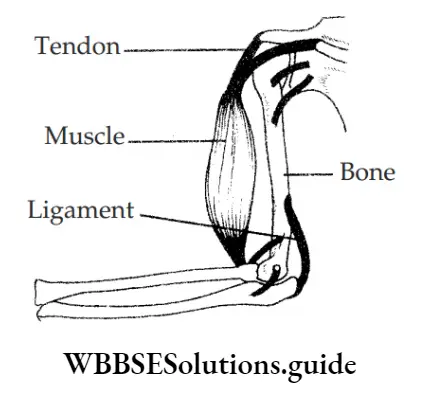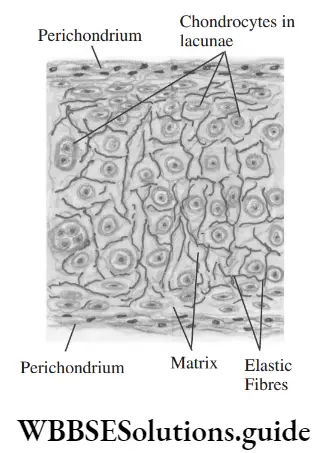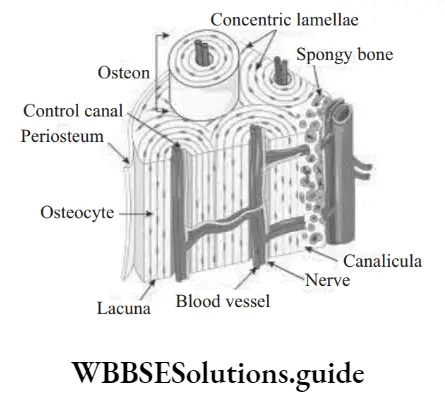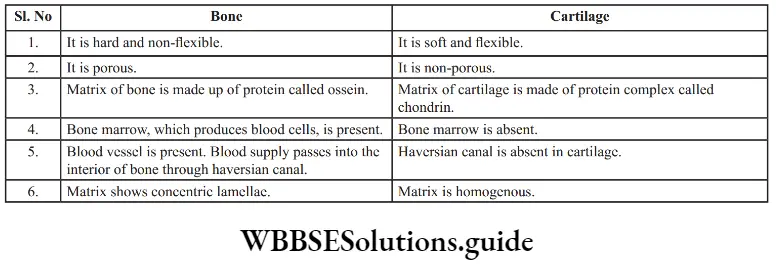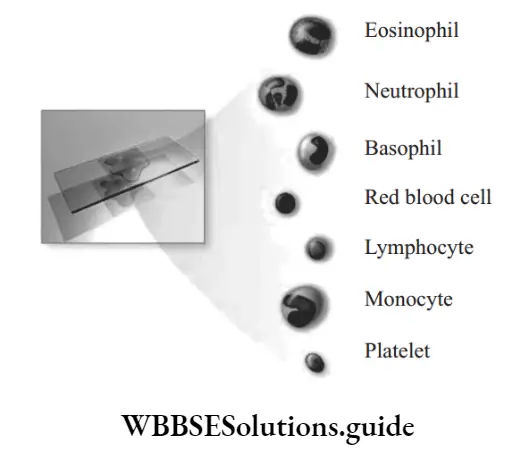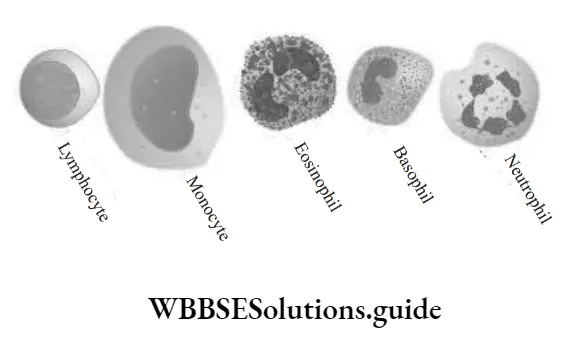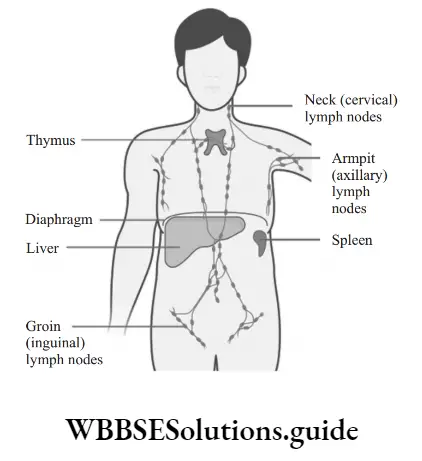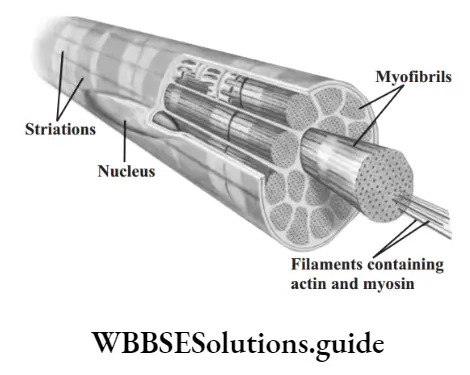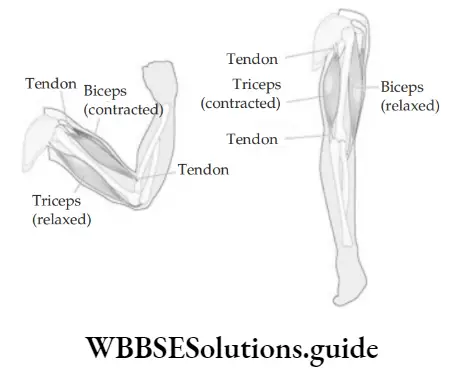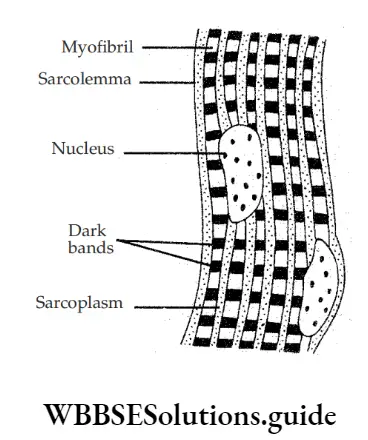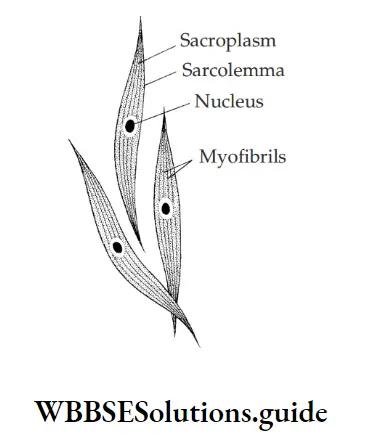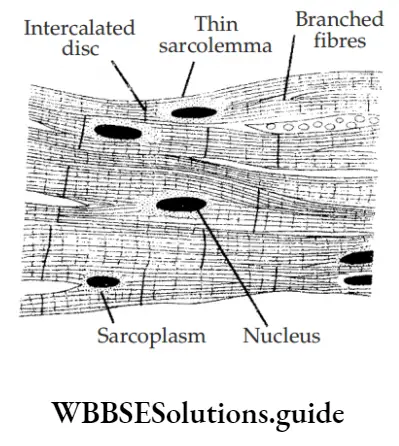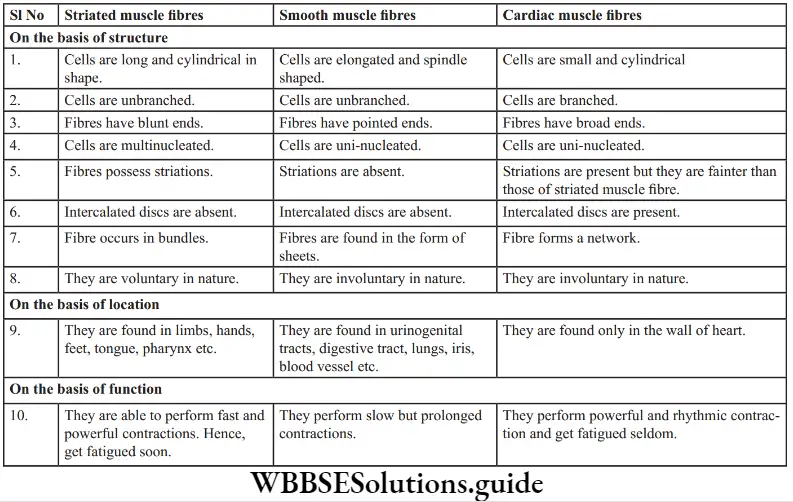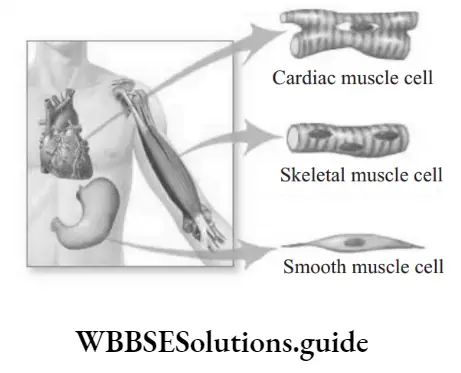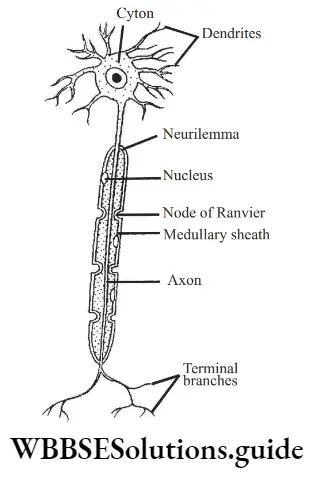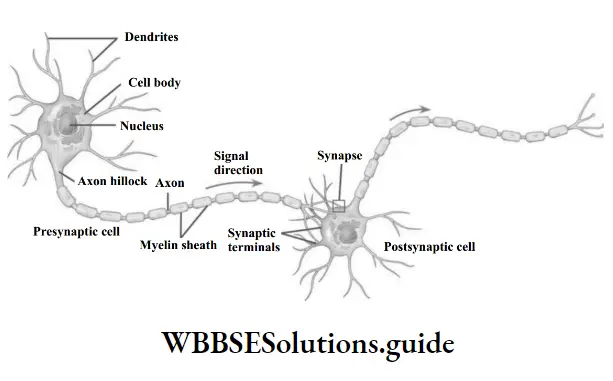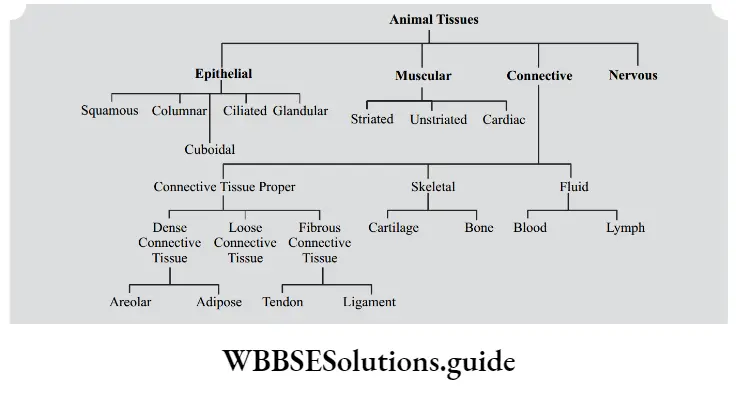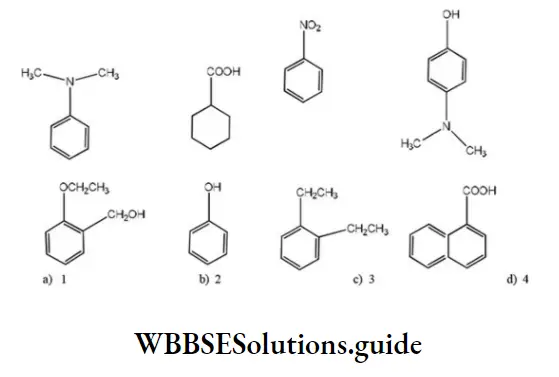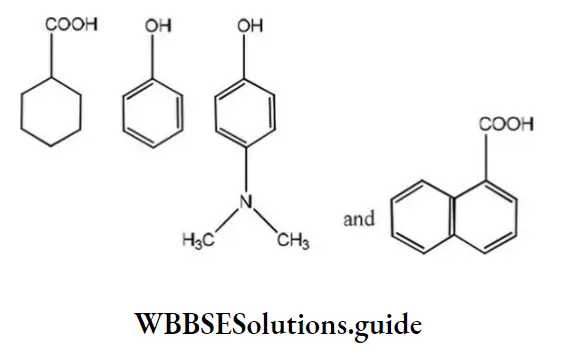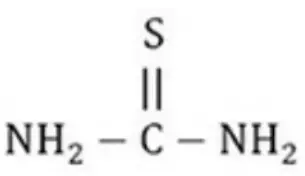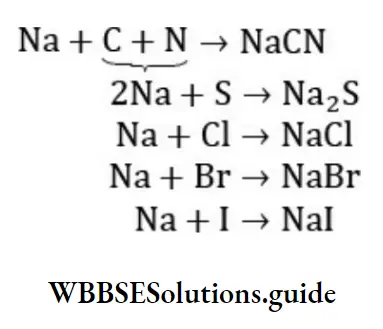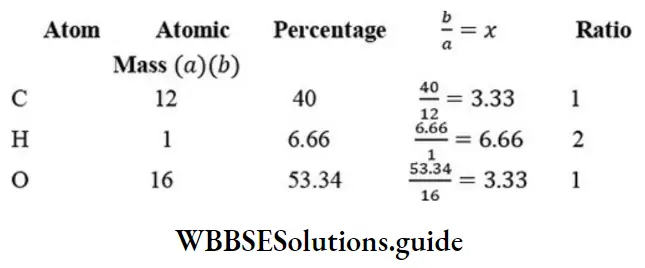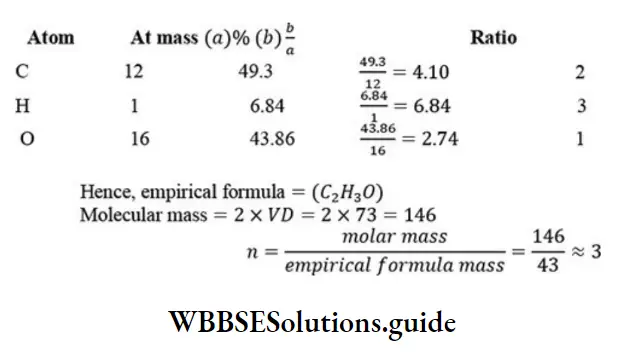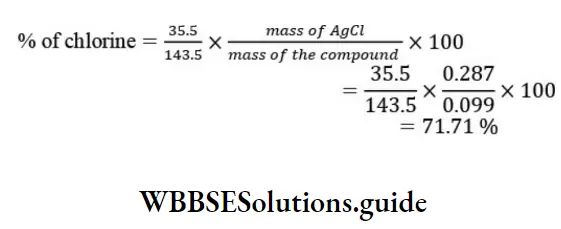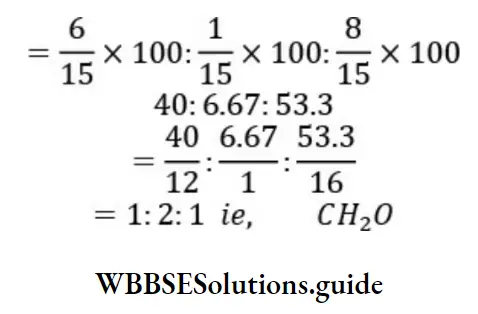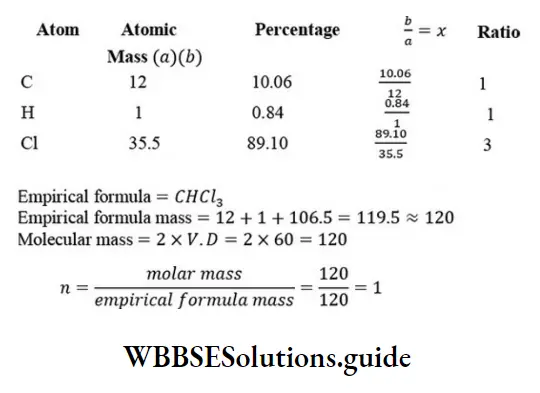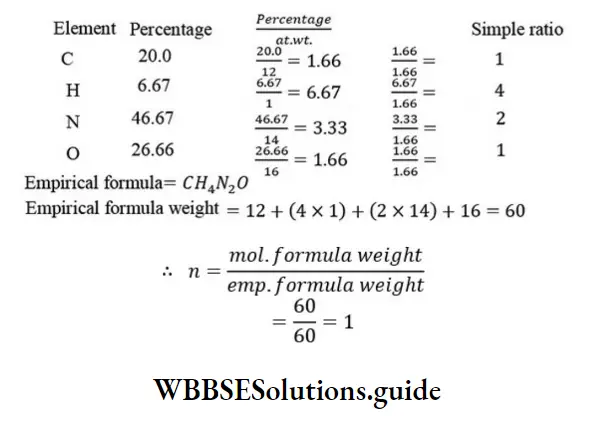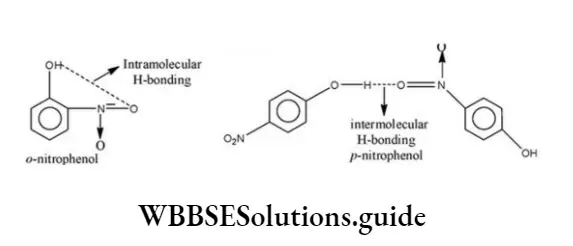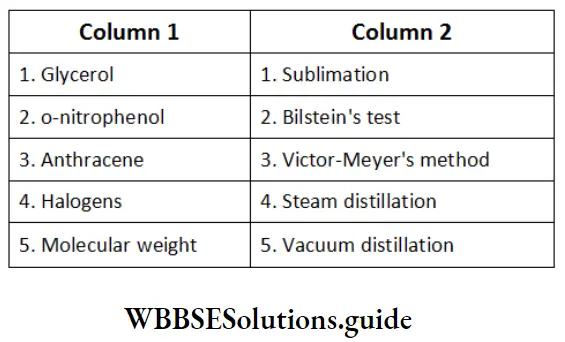Chapter 1 Biology The Fundamental Unit of Life Introduction:
- Our Earth is inhabited by millions of different kinds of living organisms. These living organisms are bacteria, fungi, plants, and animals. Although the great diversity of organisms look very different from each other but all these organisms exhibit a unique similarity in their organization.
- Can you guess the structure, which is common to all these organisms? Yes, it is the cell. The bodies of all living organisms are made up of microscopic units called cells. Each of us has about 50 million cells-an enormous number which is diffiult to imagine.
- Thus, the cell is the basic structural and functional unit of living organisms. Cell Biology is the study of cells in all aspects of structure and function.
Read And Learn More: NEET Class 9 Biology Notes
Discovery Of The Cell
- In 1665, Robert Hooke, an English scientist, saw cells for the fist time in a thin slice of cork with its microscope. He observed and described the cells as “Honeycomb” like structures. He named the box-like compartments as cellular or cells. The term “cell” is derived from the Latin word cella which means little room or hollow space.
- In 1674, Van Leeuwenhoek, a Dutch Scientist, studied living cells for the fist time with the help of an improved microscope, which he himself had made. Though he was the fist one to observe “cells”, but he did not use the term “cell”.
- In 1838, two biologists, J.M Schleiden and T.Schwann proposed the “Cell Theory”. According to them, the cell is the structural and functional unit of all living beings.
- In 1855, Rudolf Virchow, a German pathologist proposed that all cells arise from pre-existing cells. He stated this in Latin as “Omnis cellula-e- cellula”.
Cells theory, therefore, states that
- All living organisms are composed of one or more cells
- The cell is the basic unit of life.
- Cells develop from pre-existing cells.
Cell Shape Size And Number
Look at the structure of onion peel cells. Do all cells look alike in shape and size? Yes, all cells are of the same shape and almost of same size.
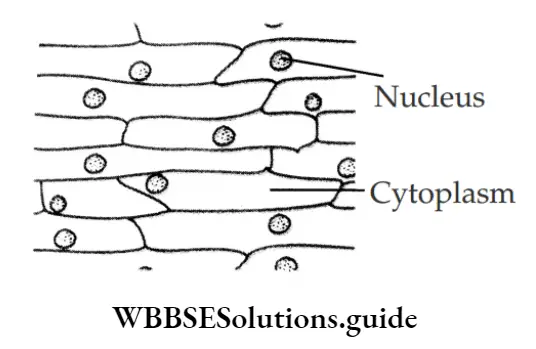
Let’s have a look at cells from the different parts of plant body. Now Are all cells the same? No, they are not.
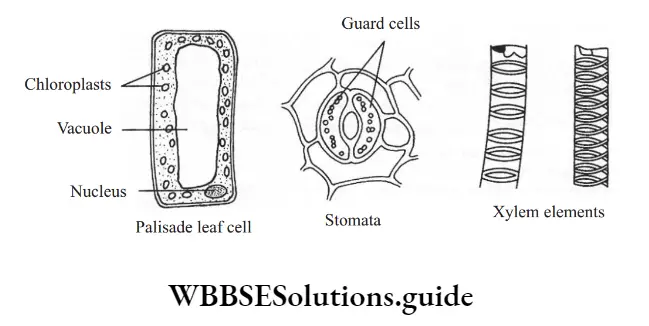
Now if we look at the cells from different parts of the human body. They too don’t look alike in shape and size. As you can see, the cells are different in shapes and size.
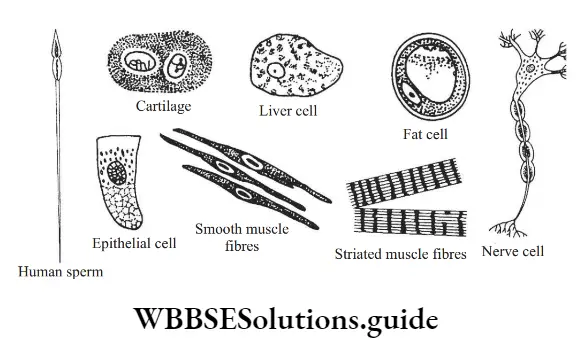
Plant cells are different from animal cells. Plant cells in a root are different to those in the stem or in the leaf. Animal cells, including cells in our bodies are all sorts of different shapes and sizes. It means cells vary in number, shape and size in different organisms and also in different parts of the same organism. Infact, the shape and size of cells are related to the function they perform. For example, in plants, xylem and phloem are elongated in shape and help in conduction of water and food. Similarly, in animals, nerve cells are long and branched that help in conduction of information from one part of body to another.
Cell Size
The size of the cell ranges between broad limits. Some cells are extremely small and can be seen only when magnifid and is visible only with a microscope since, they are only a few micrometres in diameter. Cells are limited in size by the ratio between their outer surface area and their volume. Small cells have more surface area for their volume of cytoplasm than large cells. As cell grows, the amount of surface area becomes too small to allow materials to enter and leave the cell quickly enough.
Cell size is also limited by the amount of cytoplasmic activity that the cell’s nucleus can control.
Actually the size of the animal is dependent on the number of cells and not the size of the cells. The cell size remains constant for a particular cell and is independent of the size of the organism. The large size of the elephant is due to the larger number of cells present in its body.
Cells are measured in micrometres. A micrometer is one thousandth of a millimetre.
Question1. Why cells are small in size?
Answer:
Cells are small in size because :
- The cells nucleus can only control a certain amount of active cytoplasm.
- Also, the cells are limited in size because of their surface area to volume ratio.
A group of small cells has a relatively larger surface area than a single large cell of same volume. A cell requires nutrients, oxygen and other materials for its survival. So, as cells grow larger at some point, its surface area becomes too small to allow these materials to enter the cell quickly enough to meet the cell’s need. Thus, as cell increases in size, its surface to volume ratio decreases that causes the cell to function less effiiently.
Cell Shape
The shape of the cells is more variable than their size. The shape of the cell may be spherical, oval, elliptical, spindle shaped, polygonal or flt-plate like. The shape of the cell is determined by the specifi function of the cell. Some of the cells like Amoeba and white blood cells can change their shape while most of the plant cells and animal cells have almost fied shapes.
Among unicellular organisms, for example, in Amoeba, the shape of the cell (body) is irregular, while among multi-cellular organisms like in plants, the xylem and phloem elements are elongated tubular structures so as to help in conduction of water and minerals; the dividing Meristematic cells are isodiametric in shape.
Similarly in animal cells, the nerve cells are elongated thread like which enables an effiient communication system, the muscle cells are elongated and contractile that helps in the movement of bones, while the red blood cells are biconcave shaped. This kind of shape of RBCs helps the RBCs to easily move through capillaries and thus permit gaseous exchange.
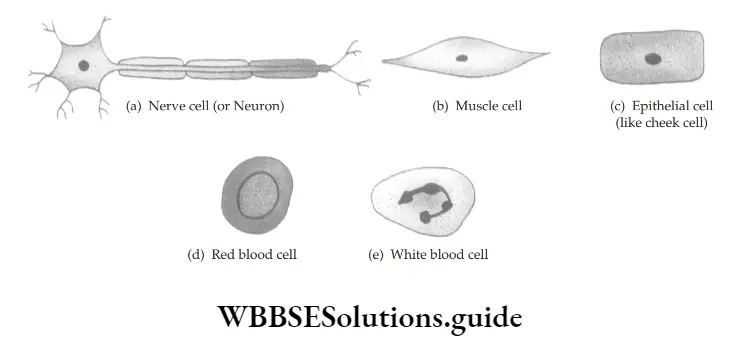
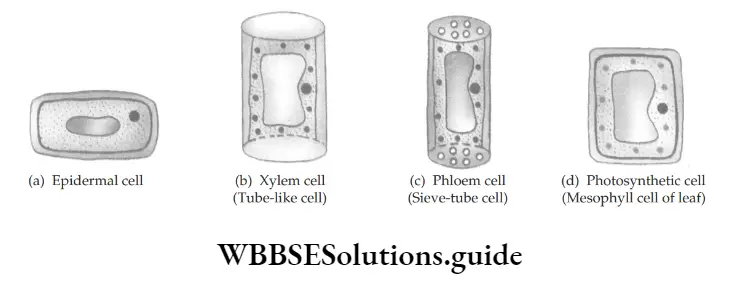
Cell Volume
The volume of a cell is constant for a particular cell type. It is independent of the size of the organism. For example, the kidney or pancreatic cells are about of same size as in dog or cat. The difference in total mass of the organism or organ depends on the number, not on the volume of the cells.
Cell Number
The number of cells varies in all living organisms. Based on the number of cells, the organisms are divided into two types.
1. Unicellular organisms (Single-celled organisms): The organisms made up of single cells are called unicellular organisms. Amoeba, Paramecium, bacteria etc are examples of unicellular organisms. The single cells have the ability to perform all the life processes like digestion, respiration, excretion, growth and reproduction. In these cells, there is no division of labour as the single cells have to perform all the activities.
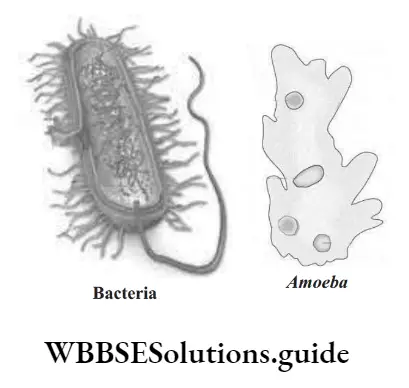
2. Multi-cellular organisms (Multi-celled organisms): The organisms made up of a number of cells are called multi-cellular organisms. Fungi, plants and animals are example of multi-cellular organisms. All the cells of multi-cellular organisms have a similar basic structure and similar basic life activities. These cells group together to produce different tissues. Tissue forms organs and organs give rise to organ system that performs specialized functions.
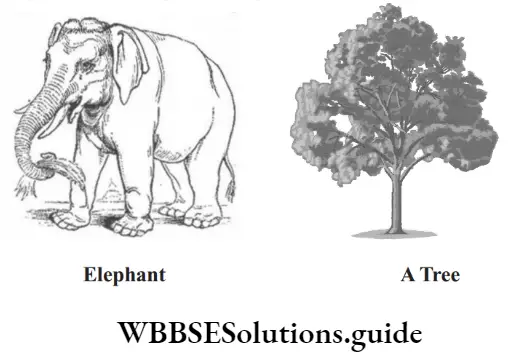
The increasing order of complexity in multicellular organisms is: Cell → Tissue → Organ→ Organ System → organism
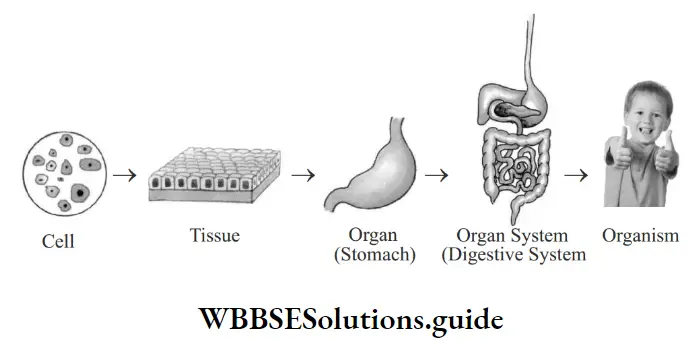
Let us summarize difference between unicellular and multi-cellular organisms
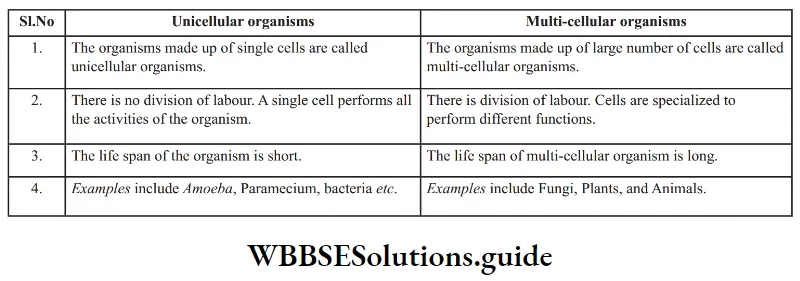
Each cell is an amazing world into itself. It can take in nutrients, convert them into energy, carry out specialized function and reproduce as necessary. Even more amazing is that each cell stores its own set of instructions for carrying out each of its activities.
Cells are of two types :
- Plant Cell
- Animal Cell
Though many things are common between animal and plants cell but they differ in some way.
Animal cell differ from plant cells in terms of structure and types of organelles
The Fundamental Unit of Life In the lab
Let us perform an experiment to study plant and animal cells with a microscope.
Part A: Plant cells (Onion skin mount):
Procedure:
- Take an onion piece and peel the delicate transparent tissue from its inner surface using forceps.
- Place this tissue, unwrinkled in a small drop of water on a glass slide.
- Then add a small drop of Safranine stain to the tissue and cover it with a cover slip. While placing the coverslip ensure that there is no air bubbles under the coverslip.
- Now observe the slide under a microscope.
Observation: You will see several small rectangular shaped cells. The boundary of each cell is covered by a cell nembrane which in turn is covered by another thick covering called the cell wall. In the center of cell, there is a dense round body called the nucleus. In between the nucleus and the cell membrane, there is a jelly like substance called cytoplasm.
Part B: Animal cells (Cheek cells):
Procedure:
- Take a clean glass slide and place a drop of water on it.
- Gently scrap the inside of your cheek with the blunt end of a clean toothpick.
- Then stir the material on the toothpick in the drop of water on the slide.
- Add a small drop of methylene blue stain on the slide.
- Now carefully place a coverslip over the slide and observe the slide under microscope.
Observation: You can see large number of irregular shaped cells with a thin cell membrane. Cell wall is absent in animal cells. In the center of cell, nucleus is present. It is stained dark blue.
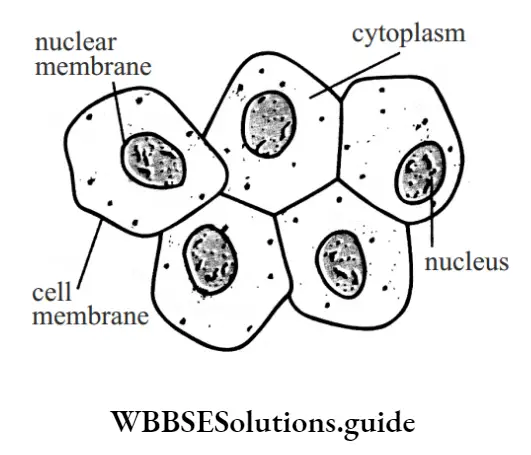
Structural Organisation Of A Cell
A cell is the basic unit of life. It performs all basic life functions like intake of food, excretion, metabolism, respiration, growth and reproduction. However, there is no mixing up of different functions. Infact, there is a division of labour. For this, a cell usually possesses a number of components called cell organelles. Each cell organelle performs specifi functions. Hence, a cell may be defied as a unit of protoplasm, bounded by a cell membrane or plasma membrane.
Plant cells are different from animal cells. Plant cells in a root are different to those in the stem or in the leaf. Animal cells, including cells in our bodies are all sorts of different shapes and sizes. It means cells vary in number, shape and size in different organisms and also in different parts of same organism. Infact, the shape and size of cells are related to the function they perform. For example, in plants, xylem and phloem are elongated in shape and help in conduction of water and food. Similarly, in animals, nerve cells are long and branched that help in conduction of information from one part of body to another.
Cell Size:
The size of the cell ranges between broad limits. Some cells are extremely small and can be seen only when magnifid and is visible only with a microscope since, they are only a few micrometres in diameter. Cells are limited in size by the ratio between their outer surface area and their volume. Small cells have more surface area for their volume of cytoplasm than large cells. As cell grows, the amount of surface area becomes too small to allow materials to enter and leave the cell quickly enough.
- Cell size is also limited by the amount of cytoplasmic activity that the cell’s nucleus can control.
- The smallest cell found is a mycoplasma cell, which is about 0.1 micron in diameter.
- The longest cells are the nerve cells, measuring about a metre in length.
- The largest cells are represented by eggs of Ostrich, which is about 170-135 mm.
Actually the size of the animal is dependent on the number of cells and not the size of the cells. The cell size remains constant for a particular cell and is independent of the size of the organism. The large size of the elephant is due to the larger number of cells present in its body.
Cells are measured in micrometres. A micrometer is one thousandth of a millimetre.
Question 1. Why cells are small in size?
Answer:
Cells are small in size because:
- The cells nucleus can only control a certain amount of active cytoplasm.
- Also, the cells are limited in size because of their surface area to volume ratio.
A group of small cells has a relatively larger surface area than a single large cell of same volume. A cell requires nutrients, oxygen and other materials for its survival. So, as cells grow larger at some point, its surface area becomes too small to allow these materials to enter the cell quickly enough to meet the cell’s need. Thus, as cell increases in size, its surface to volume ratio decreases that causes the cell to function less effiiently
Discovery Of The Cell
In 1665, Robert Hooke, an English scientist, saw cells for the fist time in a thin slice of cork with its microscope. He observed and described the cells as “Honey comb” like structures. He named the box-like compartments as cellulae or cells. The term “cell” is derived from a Latin word cella which means little room or hollow space.
In 1674, Van Leeuwenhoek, a Dutch Scientist, studied living cells for the fist time with the help of an improved microscope, which he himself had made. Though he was the fist one to observe “cells”, but he did not use the term “cell”.
In 1838, two biologists, J.M Schleiden and T.Schwann proposed the “Cell Theory”. According to them, the cell is the structural and functional unit of all living beings.
In 1855, Rudolf Virchow, a German pathologist proposed that all cells arise from pre-existing cells. He stated this in Latin as “Omnis cellula-e- cellula”.
Cells theory, therefore, states that
- All living organisms are composed of one or more cells
- The cell is the basic unit of life.
- Cells develop from pre-existing cells.
Cell Shape Size And Number
Look at the structure of onion peel cells. Do all cells look alike in shape and size? Yes, all cells are of the same shape and almost of same size.
Let’s have a look at cells from the different parts of plant body. Now Are all cells the same? No, they are not.
Now if we look at the cells from different parts of human body. They too don’t look alike in shape and size. As you can see, the cells are different in shapes and size.
1. Diffusion: The process of movement of substance from the region of higher water concentration to the region of lower concentration, so as to spread the substance uniformly in the given space is known as diffusion. The process does not require energy.
For example: Transport of CO2 and O2 across the membrane. The gases like CO2 and O2 move across the membrane through diffusion. The process of respiration produces carbon dioxide inside the cell. As the concentrate of CO2 increases inside the cell as compared to the outside, CO2 diffuses out of the cell into external medium.
Similarly, the concentration of oxygen is always higher in the external medium (atmosphere) as compared to the cell. Therefore, oxygen diffuses from outside to the inside of cell
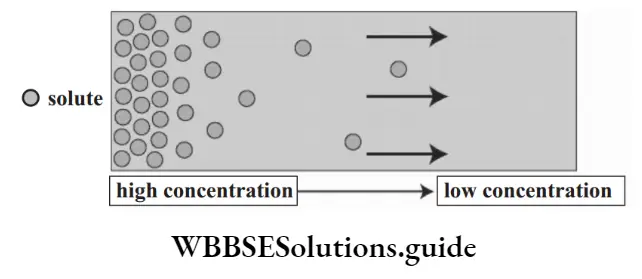
Activity:
Let us perform an activity to understand the process of diffusion.
Take a glass beaker half filed with clean water. Put a few drops of coloured ink, say blue colour, into the beaker. What did you
observe?
You would fid that blue coloured ink slowly diffuses into the water until the ink molecules get uniformly distributed. This spontaneous movement of a substance from a region of higher concentration to the region of lower concentration is known as diffusion.
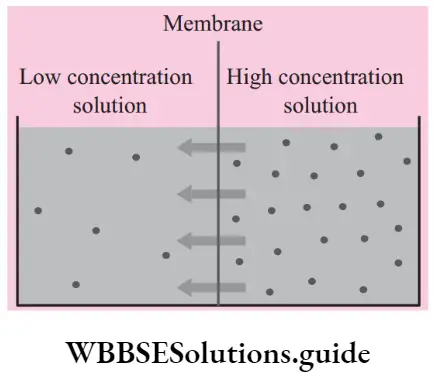
Osmosis: It is defied as the diffusion of water from region of higher concentration to region of lower concentration across the semi-permeable membrane. This kind of movement is along concentration gradient. There is no expenditure of energy.
For example: Movement of water across selectively permeable membrane.
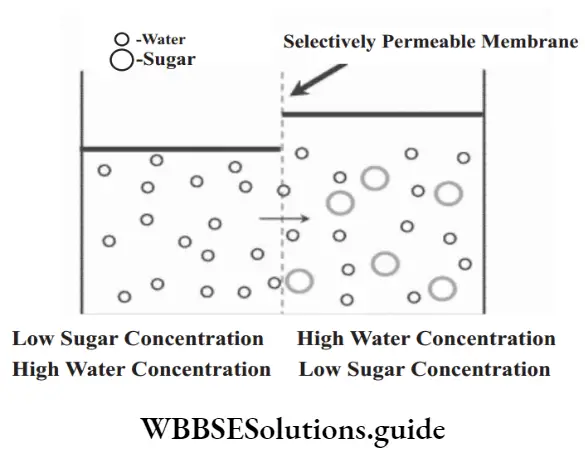
Difference between Diffusion and Osmosis:
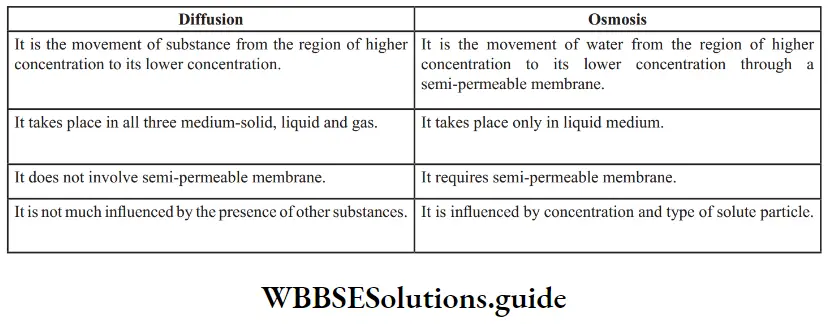
Types of Osmosis:
Endosmosis: Endosmosis is the osmotic entry of water into the cell.
Exosmosis: Exosmosis is the osmotic withdrawal of water from the cell.
There are three types of osmotic Solution, which can cause osmosis across semi-permeable membrane.
Hypotonic Solution: (Hypo=less than or lower) : Hypotonic is the Answer: which has lower osmotic concentration than the cell.
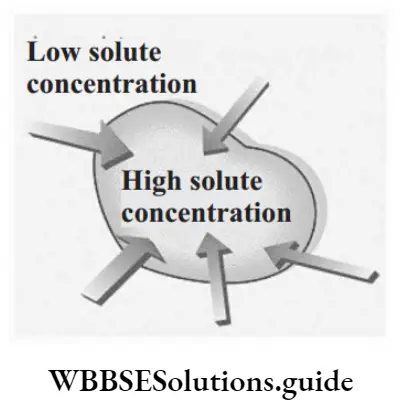
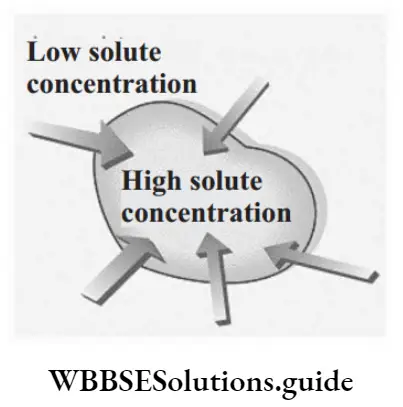
Hypertonic Solution: (Hyper=more or higher) : Hypertonic is the Answer: that has higher water concentration than the cell.
Isotonic Solution: (Iso=same) : It is the Answer: that has same osmotic concentration as inside the cell.
The Fundamental Unit of Life In the Lab
Let us perform an activity to understand the three types of Answer: and the process of osmosis.
Take an animal or a plant cell. Place it in a medium that has higher water concentration than the cell. What will happen? The cell will gain water by endosmosis. Such type of Solution is known as hypotonic Solution. Since, water molecules are free to pass across the cell membrane in both directions, so when cell is placed in a hypotonic Solution more water will come into the cell than it leaves. As a result, the cell is likely to swell up. As water keeps on moving inside cell, the animal cells burst while the plant cells become turgid but do not burst due to the presence of cell wall.
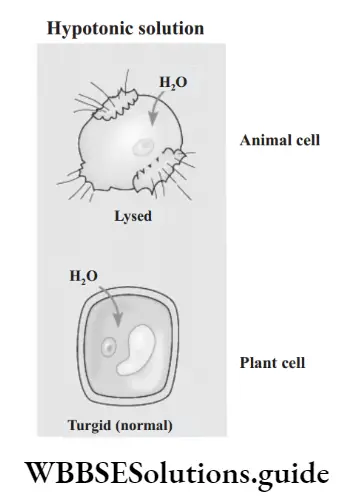
Now place the plant and animal cell in a medium that has lower water concentration. What will happen? The cell will lose water by exosmosis. Such a Solution is known as a hypertonic Solution. Since, water molecules are free to pass across the membrane, so when cell is placed in hypertonic Solution, the cell will lose water. As a result the cell will shrink. In plant cell, the shrinking protoplasm will contract from cell wall and the process is known as plasmolysis while in animal cell; the whole cell shrinks on all sides to give a wrinkled appearance. This process is known as crenation.
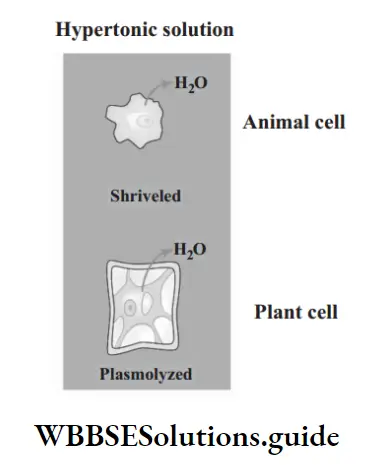
What will happen, if the cell is placed in a medium that has same water concentration as that of cell? There will be no net movement of water across the membrane. Such a Solution is known as isotonic Solution. In isotonic Solution , the amount of water going into and out of cell is same. Hence, there is no movement of water and the size of cell remains the same.
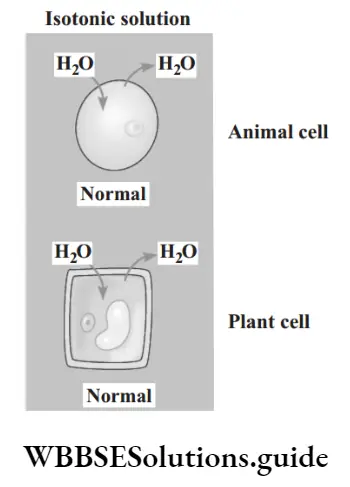
2. Active transport: Active transport is the process of transport of molecules across the plasma membrane against the concentration gradient. The process requires the use of energy. For active transport, the cell membrane possesses ATP mediated carrier protein. Glucose, amino acids and ions pass through plasma membrane by active transport.
Question 1. Why does the skin of your figers shrink when you wash clothes for a long time?
Answer:
Clothes are washed with soap or detergent Solution. The Solutiion is hypertonic as compared to osmotic concentration of our skin cells.
The detergent Solution , therefore, causes exosmosis in the skin cells. Hence, the skin over the figer shrinks while washing clothes for a long time.
Question 2. Classify the following as osmosis or diffusion.
- Swelling up of raisins on keeping in water.
- Spreading of virus on sneezing.
- Fish using oxygen dissolved in water during respiration.
- Absorption of water by the roots from the soil
Answer:
- Osmosis
- Diffusion
- Diffusion
- Osmosis
Cell Wall:
Cell wall is a rigid, non-living covering present outside the plasma membrane in plant cells. Animal cells lack a cell wall. Plant cell is made up of cellulose, which is permeable to water, solutes and gases. In fungi, the cell wall is made up of chitin. A cementing layer called middle lamella is present between the walls of two adjacent cells. Middle lamella is formed of pectin, calcium and magnesium pectate.
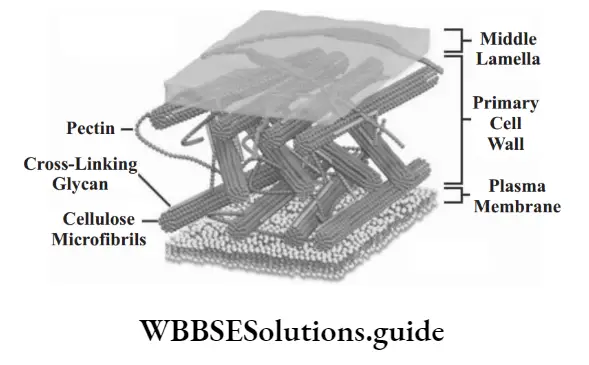
Difference between Cell wall and Cell membrane:
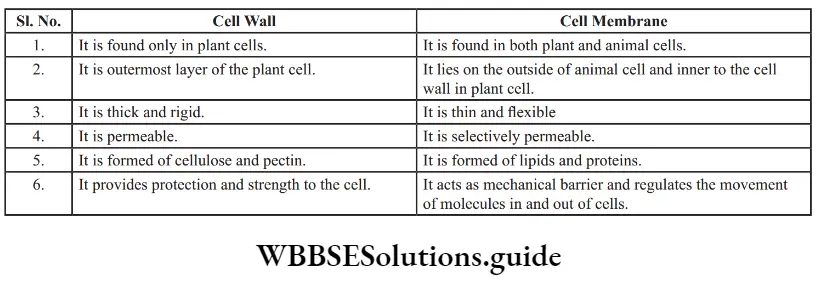
Functions of Cell Wall:
- It gives defiite shape to the cells.
- It provides mechanical strength to plants.
- It protects the cell against mechanical injury and pathogens.
- It helps in transport of various substances across it.
- Cell wall helps the plant cells to withstand a lot of variations in the surrounding environment.
- Cell wall prevents the bursting of cell on endosmosis as it is quite thick and rigid.
Question 1. Why cell wall is present only in plant cell?
Answer:
Plants grow tall, towards the sun’s light. So, in order to provide strength and necessary support, the plants have cell wall and is present only in plant cell.
Nucleus:
Nucleus is the prominent, spherical structure found at the center of the cell. It is the largest organelle present in cell. Basically, nucleus is the controlling centre of all cell activities and hence, it has been described as the brain of the cell. In plant cell, nucleus lies towards the periphery due to the presence of large central vacuole while in animal cell, nucleus lies in the central position.
Structure of Nucleus It is made up of following parts:
1. Nuclear envelope: It is the double membranous structure that separates the nucleus from the cytoplasm. It is mainly made up of proteins and lipids. The membrane is perforated by several nuclear pores, which allows exchange of materials between the nucleus and cytoplasm.
On the basis of presence or absence of nuclear membrane, organisms are divided into two types:
- Prokaryotes (Pro = Primitive, karyotes = nucleus): Organism whose cells do not possess a well formed nucleus are known as prokaryotes. Examples, Bacteria, Cyanobacteria, etc. Prokaryotes also lack membrane bound cell organelles. Thus, cell organelles like mitochondria, golgi bodies, ER are absent in prokaryotes.
- Eukaryotes (Eu= True, karyotes = nucleus): Organisms whose cells possess a nuclear membrane are known as eukaryotes. Cell organelles like mitochondria, golgi bodies, ER are present in eukaryotes.
Examples are plants and animals.
Difference between Prokaryotes and Eukaryotes:
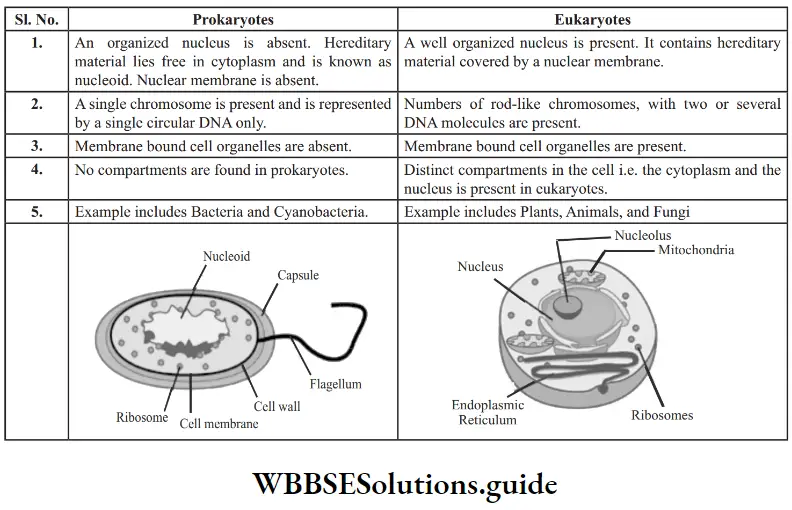
Nucleoplasm (Nuclear sap): It is colourless cytoplasm within nuclear membrane in which chromatin and nucleoli are suspended.
Nucleolus: It is dense, spherical granular structure found inside the nucleus. Nucleolus is not bounded by a membrane. It is membraneless. It is rich in proteins and RNA. Basically, Nucleolus is the site of ribosome formation. Ribosome, in turn helps in protein synthesis in the cytoplasm.
Chromatin Network: Chromatin is a network of fie thread like coiled fiaments uniformly distributed in the nucleoplasm. It is usually made of DNA and protein. During cell division, chromatin become highly condensed, thick and rod like structures known as chromosomes.
The chromosome contains genes, which are composed of DNA. A gene is the functional unit of a chromosome. These are arranged in a single linear order along the chromosome. One gene is responsible for single characteristic or a single characteristic may be transmitted by a set of genes. Genes are responsible for storing and transmitting hereditary characteristics from one generation to another.
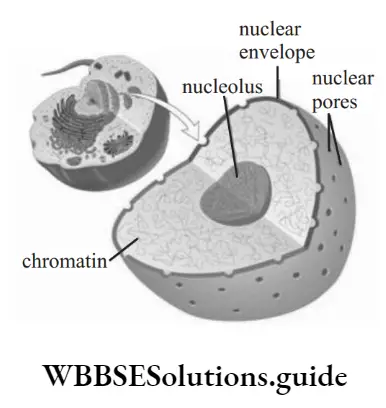
Functions of Nucleus:
- Nucleus is the chiefcontrolling center of cell. It contains chromosomes which carry genes. Genes are responsible for transmission of hereditary characters from parents to offspring.
- Nucleus controls all metabolic activities taking place in the cell.
- It participates directly in cell division to produce genetically identical daughter cell by a process known as mitosis.
Question 1. Do all cells contain a well defied nucleus structure?
Answer:
No. Not all cells contain a well-defied nucleus. The nucleus of bacterial cell is not well organised like the cells of multi-cellular organisms. They do not have nuclear membrane. Such type of cells are known as prokaryotic cells. On the other hand, the cells that have a well-organised nucleus with a nuclear membrane are called eukaryotic cell.
Question 2. Give an example of a human cell which lack a nucleus?
Answer:
Red blood cells. The red blood cells of humans lose their nuclei, which enables them to carry more hemoglobin and thereby more oxygen.
Question 3. How are chromatin, chromatid and chromosomes related to each other?
Answer:
Chromatin is interwined mass of fie thread like structure made of DNA and protein. During the division of a cell, chromatin condenses to form thicker rod like structures called chromosomes. Each chromosome consists of two similar halves called chromatids. The formation of chromosomes having two chromatids is meant for equal distribution of chromatin, which is a hereditary material.
Question 4. Why DNA is called “the blueprint of life”?
Answer:
In the center of all plant and animal cell, there is a copy of organism’s genetic material, called DNA or deoxyribonucleic acid. This DNA carries a complete blue print of the organism that transfers characteristics from one generation to the next. Our DNA comes from our parents and their DNA comes from their parents too. That is why relatives have similar DNA to each other.

4. Cytoplasm:
Cytoplasm occupies the major part of the cell. It is a living component of cell, consisting of transparent, semi-flid granular substance. It is limited on the outside by the cell membrane. Water is the main component of the cytoplasm.
Cytoplasm has two major parts:
- Cytosol: Cytosol is the flid part of cytoplasm. It is viscous, and contains a number of substances like water, ions, enzymes, vitamins, carbohydrates, lipids and proteins. All major biochemical reactions take place in the cytoplasm.
- Cell organelles: Cell organelles are tiny, sub-microscopic structures that are specialized to perform specifi functions. These organelles are bounded by a membrane to keep their contents separate from the external environment. These organelles include Mitochondria, Endoplasmic reticulum, Golgi bodies, Plastids, Lysosomes, Peroxisomes, Ribosomes and Centrosomes.
Let’s discuss each of these organelles one by one in detail.
1. Mitochondria (Singular-Mitochondrion):
Mitochondria are rod shaped cell organelles surrounded by a double membrane. The outer membrane is smooth and porous while the inner membrane is folded into large number of figer like structures called cristae. Cristae increase the surface area of the inner membrane, which provides more surface area for the metabolic reactions to take place. The flid inside the mitochondria is called the matrix.
Mitochondria are commonly known as “Powerhouse of the cell”. They contain enzymes necessary for the total oxidation of food and for the release of large amount of energy in the form of ATP molecules. The energy stored in this ATP is used for synthesis of new products and other metabolic process.
Flow chart that describes the fate of glucose in the release of energy:

Mitochondria have the ability to make their own protein, as they contain their own DNA and ribosome. That is why; mitochondrion is also known as semi-autonomous organelle
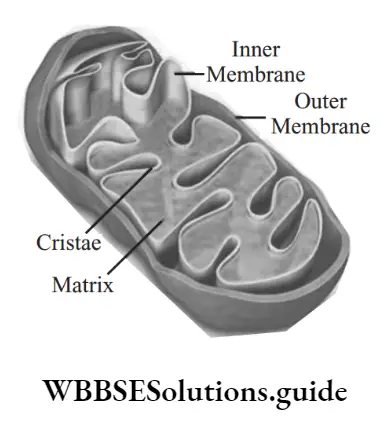
Functions of Mitochondria:
- Mitochondria are the site of cellular respiration. They use molecular oxygen from air to oxidize the carbohydrates and fats present in the cell to carbon dioxide and water vapour.
Glucose + Oxygen → Carbon dioxide + Water + Energy (ATP)
- Mitochondria provide energy in the form of ATP for various metabolic activities of living cells. Since, the mitochondria synthesize ATP, it is also known as power house of cell.
2. Plastids :
Plastids are found only in plant cells. They are absent in animal cells.
On the basis of pigments present in them, plastids are of the following three types:
- Leucoplasts: Leucoplasts are colourless plastids. They are found in storage cells of roots, seeds and underground stems. They take part in storage of food.
- Leucoplasts are of three types depending on the storage products : Amyloplasts stores starch, Aleuroplasts stores protein while elaioplasts store oil and fat.
- Chromoplasts: They are coloured plastids. The colour varies from red, orange, yellow etc due to the presence of carotenoids. They are mostly found in flwers and fruits. They provide colouration to organs for attracting pollinators.
- Chloroplasts: Chloroplasts are green colour plastids, found in leaves. The green colour is due to the presence of chlorophyll. Chlorophyll traps the solar energy which is used for manufacturing food. They are the sites of photosynthesis.
So, chloroplasts are the “Kitchen of the cells”.
Structure of chloroplasts: A chloroplast is bounded by two membranes i.e. outer membrane and inner membrane. The inside of chloroplast is clearly marked into a colorless ground matrix called stroma.
- Stroma is homogenous matrix in which grana is embedded. Stroma contains a variety of photosynthetic enzymes, DNA and ribosomes. It is the site where all chemical reactions occur and starch (sugar) is synthesized.
- Grana are stacks of membrane bound, flttened sacs containing the molecules of chlorophyll. One thylakoid stack is known as granum. Each thylakoid have chlorophyll molecules on their surface that trap sunlight and take part in process of photosynthesis.
The stacks of grana are connected by stromal lamellae. The lamellae act like the skeleton of chloroplast, keeping all sacs in safe distance from the other sac. Grana are main functional units of chloroplasts.
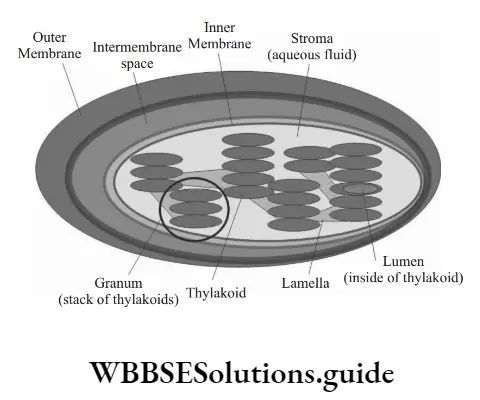
Functions of Chloroplast:
Chloroplasts trap solar energy, which is used to manufacture food through photosynthesis. Photosynthesis is the process of synthesizing food (sugar) from carbon dioxide and water in the presence of sunlight.

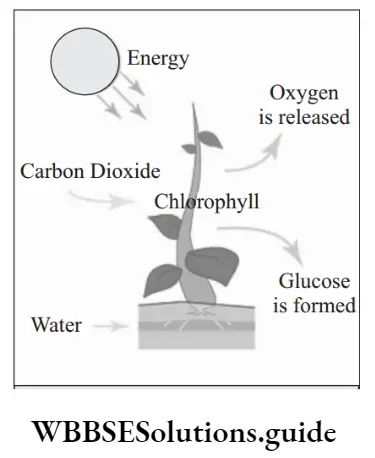
- Chromoplasts provide colour to fruits and flwers to attract insects for pollination.
- Leucoplasts take part in storage of protein, starch and oil.
Question What will happen if chloroplast is taken out of the cell and is illuminated?
Answer:
Chloroplast is a semi-autonomous cell organelle. They have their own DNA and protein. So, if chloroplast is taken out of the cell and illuminated, it can still perform its function of photosynthesis and release oxygen, provided it is kept in isotonic medium and receives raw material of carbon dioxide.
3. Endoplasmic reticulum:
Endoplasmic reticulum is a complex network of membrane bound structure which runs through the cytoplasm. Cisternae are spaces within the folds of the ER membranes. It is connected to both the outer nuclear membrane as well as cell membrane. The membrane has the same structure as the plasma membrane but ribosomes do not have membranes.
Depending on presence or absence of ribosome on the surface of ER, it is divided into two types:
- Rough Endoplasmic reticulum (RER): It is lined with ribosomes and is rough in appearance, hence, named as rough endoplasmic reticulum. It is the site of protein synthesis.
- Smooth Endoplasmic reticulum (SER): It contains no ribosomes and hence is smooth in appearance. It helps in lipid and steroid synthesis.
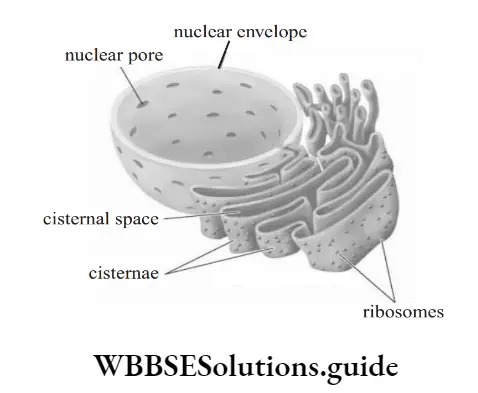
Functions of endoplasmic reticulum:
- The endoplasmic reticulum helps in the intracellular and intercellular transport of materials. It is the “transport system” of the cell.
- It transports chemicals between cells and within cells.
- It provides large surface area for various metabolic reactions.
- RER is the site of protein synthesis.
- SER helps in lipid synthesis.
- SER in liver cells helps in detoxifying many drugs and poisons.
- Proteins and lipids synthesized on ER are used for making cell membranes. The process is known as membrane biogenesis.
4. Golgi Bodies:
The Golgi body consists of smooth, flattened, membrane-bound, sac-like structures called cisternae. The cisternae are stacked together; placed one above another in parallel rows. It is frequently surrounded by vesicles, which are discharged from the cisternae.
Membranes of the Golgi body may develop connections with membranes of ER to form a complex called an extramembrane system. incoming transport vesicle
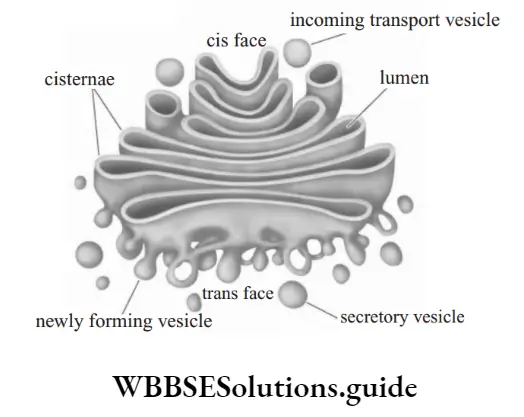
The Golgi apparatus receives vesicles from ER on its convex or cis face for elaboration of their contents. They are then dispatched to intracellular and extra cellular targets through vesicles that develop on the sides as well as maturing convex or trans face of apparatus
Functions of Golgi bodies:
- It is involved in the synthesis and repair of cell membrane.
- It is also involved in formation of lysosomes and peroxisomes.
- Secretion is the major function of Golgi apparatus. All types of substances that are secreted and excreted are packed in vesicles
- by Golgi bodies for passage to the outside. It is the secretory organelle of the cell.
- Golgi apparatus also takes part in storage, modifiation and packaging of various biochemical products produced by different components of the cell.
5. Lysosomes (Lysis = Breaking down; Soma = Body): Lysosomes are small, spherical vesicle covered by a single membrane. It is scattered all over the cytoplasm.
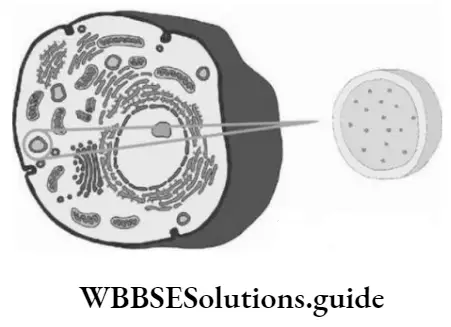
It contains powerful digestive enzymes (about 40 in number) that are capable of breaking down the organic material. Thus, lysosome serves as an intracellular digestive system, and is called digestive bags.
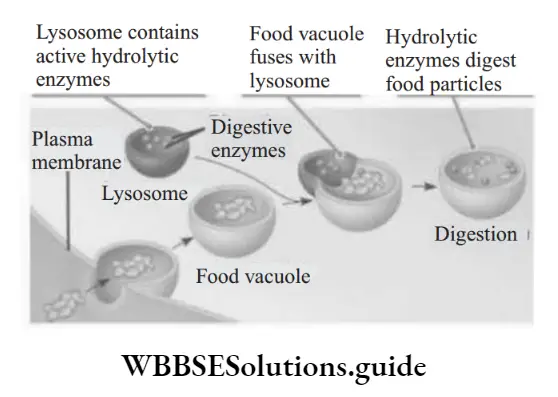
The digestive enzymes contained in lysosomes are synthesized by RER, and are packed into lysosomes by Golgi bodies. Lysosomes are also called suicidal bags as enzymes contained in them can digest the cell’s own material when damaged or dead.
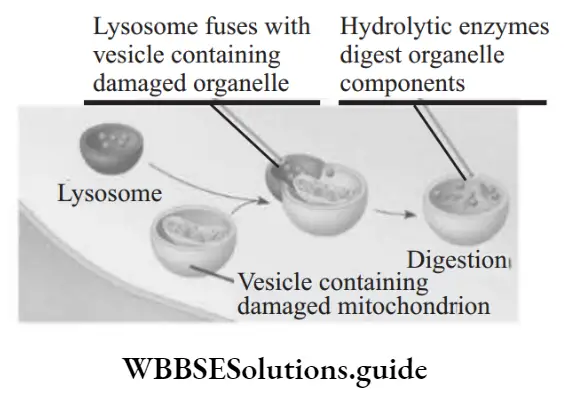
Functions of Lysosomes:
- Lysosome helps in intracellular digestion of food particles as they are rich in various digestive enzymes.
- They help in destruction of foreign particles, as in white blood cells.
- They help in cleaning up the cell by digesting damaged materials of the cell. Lysosomes are therefore called cellular scavengers.
- Lysosomes digest the cell’s own material when damaged or dead. Hence, they provide energy during cell starvation by digesting cell’s own parts.
6. Vacuoles:
Vacuoles are membrane bound flid-filed cavities or sacs present in the cytoplasm. They are surrounded by a membrane called tonoplast. The vacuole is filed with a liquid called “cell sap” that contains dissolved salts and sugars.
A single, large vacuole is present in a plant cell. In animal cells, vacuole may or may not be present. If present, they are numerous and smaller in size.
Vacuoles are of three types:
- Sap vacuole: Sap vacuole stores salts, sugar, amino acids, salts and some proteins. Sap vacuole helps in maintaining turgidity and rigidity of the cell. It also maintains the osmotic pressure of water.
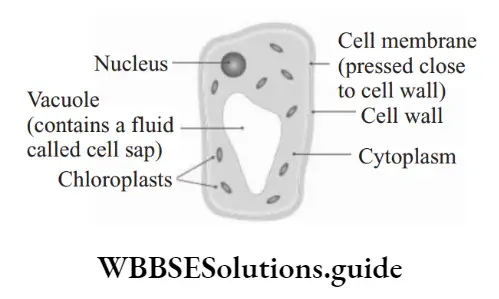
- Food vacuole: In single-celled organisms, like Amoeba, the sacs containing ingested food fuse with lysosomes to form food vacuole. The process of digestion takes place inside the food vacuole.
- Contractile vacuole: Contractile vacuole collects liquid from the cell, swells up and rises to the surface and burst to release their contents. They take part in osmoregulation and excretion.
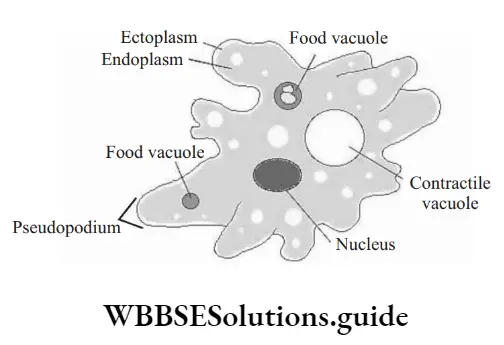
Functions of Vacuole:
In plant cells:
- Vacuoles help to provide turgidity and rigidity to the cell.
- Vacuole acts as a store house of pigments and waste products. It also stores useful minerals and salts.
- Sap vacuole maintains an osmotic concentration which is required for absorption of water.
In animal cells:
- In single celled organisms, like Amoeba, food vacuole helps in digestion of food particles.
- Contractile vacuole takes part in osmoregulation and excretion.
- They store materials such as food, water, sugar and waste products.
7. Centrosome:
Centrosome is a small naked organelle found in the cytoplasm near the outer surface of the nucleus. It encloses two microcylinders called centrioles. The two centrioles lie at right angles to each other.
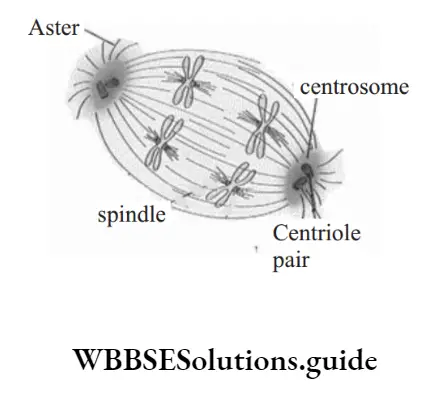
In plant cells, centrosome is absent and polar caps perform the function of the centrosome.
Functions of centrosome:
- Centrosome and Centriole help in formation of spindle fires during cell division.
- Centriole also produces basal bodies that form cilia and flgella.
8. Ribosomes:
Ribosomes are tiny, membrane-less organelle present in the cytoplasm. They are found either in Free State in the cytoplasm or attached to the surface of ER. They are rich in RNA and proteins.
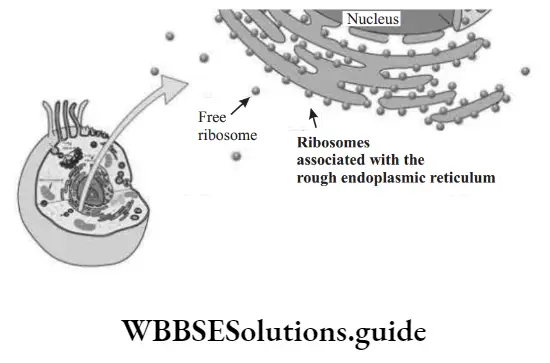
Functions of Ribosome: Ribosomes are sites of protein synthesis. Hence, they are known as protein factories of cell.
Name the organelle which shows analogy written as below:
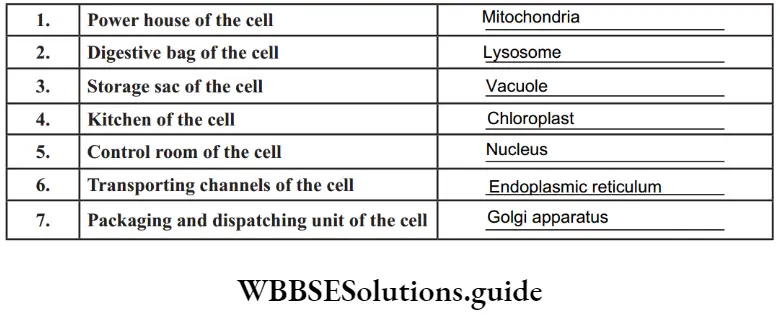
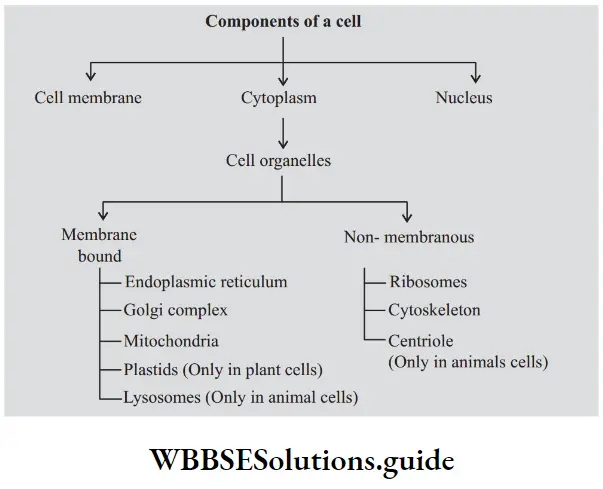
Difference between Plant and Animal Cell:

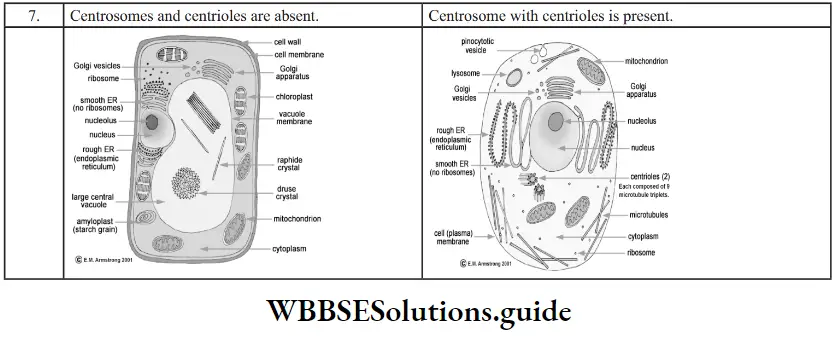
Let us summarise the functions of various parts of a cell:
